Rated 98% based on 1021 reviews

UK 0345 475 1815 USA (toll free) 877‑209‑5620 International 00 44 345 475 1815 [email protected] Rated 98% on feefo
Sign-in Latest News Subscribe Request Brochure
- Future Planning
- Military History and Battlefield Tours
- Classical History and Archaeological Tours
- Holocaust Tours
- General History Tours
- Experience Tours
- Walking Tours
- Early Periods
- 17th & 18th Century
- Victorian Era
- First World War
- Second World War
- Cross-Periods
- Destinations
- Our Expert Historians
- Historians Q&A
- Historical Tailor Made Tours
- School Tours
- Battlefield Studies
- Testimonials
- What to Expect
- Activity Levels
- Tour Diaries & Images
- Our Library
- Frequently Asked Questions
- Work For TCE
- General Booking Conditions
- Download Booking Form
- Tours by Date
- Tours by Theme
- Tours by Period
- Tours by Destination
- Latest News
- Request Brochure
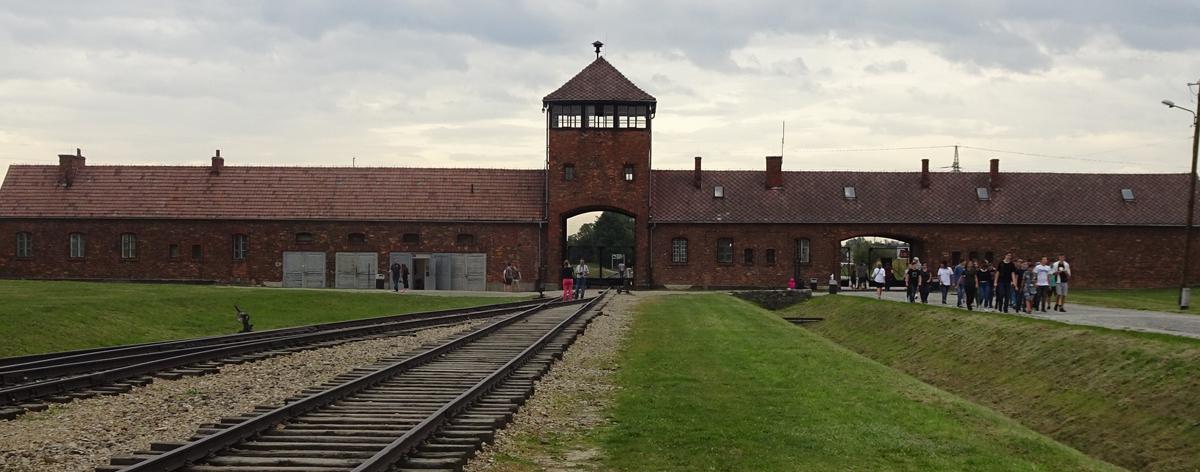
- The Holocaust

Poland and the Nazi Death Camps
Experience Tours General History Tours Holocaust Tours
26th June - 3rd July 2024 (8 Days)
Expert Historian : Professor Alexander Korb
Tour price: £2,800
click here to book
MORE DATES AVAILABLE BELOW
Your Holiday Essentials
26th June - 3rd July 2024 (8 Days)
4-star hotels, meals as indicated,
drinks with dinner, all entrance
fees, tour manager and expert
historian throughout, all internal
travel, optional travel from UK.
Activity Level : 2
Standard price: £2,550
Incl. travel from UK: £2,800 Room sole occupancy supplement: £315 Non-refundable deposit: £275
Booking open
Interested in this tour but not ready to book? Register your interest using the link below and we will keep you updated on the progress of the tour.
click here to register your interest
28th August - 4th September 2024 (8 Days)
Expert Historian : Dr Isabel Wollaston
Use the button below to be put on the waiting list
2nd - 9th October 2024 (8 Days)
Expert Historian : Martin Winstone
Tour Introduction
In this 8-day tour to Poland, we visit the sites of the former ghettos in Warsaw, Lublin and Krakow alongside four of the concentration and death camps - Treblinka, Majdanek, Belzec and Auschwitz-Birkenau - that played such a significant role in this genocide. We look at the struggle of both the Jews and the Poles against their oppressors,visiting the scenes of Ghetto Uprising in 1943 and the memorial to the Warsaw Rising in 1944. You will see the shift from complete physical destruction of ghetto and camp to the actual remnants due to the rapid advance of the Soviets. However, the tour is not limited to the serious and emotive history of the Holocaust, with its clear message for future generations. We also enjoy expert guided tours of the historic cities of Warsaw and Krakow. We sample much of the local culture and visit the world famous salt mine at Wieliczka. Each evening we will dine in a different local restaurant to enjoy a wealth of diverse local cuisine. The topography of the sites we visit involves a fair amount of walking: at Auschwitz/Birkenau you will cover almost 8 miles over the course of the day, but that is necessary to achieve a full appreciation of the subject.
Read reviews of this tour by past travellers
Under Communism, in Poland it was traditional to refer to ‘six million Poles murdered during World War II, a figure that referred to 3 million ethnic Poles and 3 million Polish Jews. Those Polish Jews were murdered in ghettos, forests in the east of the country, or purpose-built death camps set up after the German occupation of Poland. By far the largest of these was Auschwitz-Birkenau, which was the site of over one million deaths, mainly Jews brought here from all over Europe. The smaller, purpose built 'killing' camp of Treblinka, where Warsaw's Jews were taken, was said by its commandant SS-Obersturmfuhrer Franz Stangl to be able to murder over 1000 people per hour at its peak. With the positioning of the Majdanek camp on the outskirts of Lublin, the Germans made no effort to disguise the killings, its gas chambers and crematorium being plainly visible to passers-by. The overarching narrative of the tour is about the shift from Polish Jews to European Jews and the evolution of policy from concentration camps to death camps.
- With Dr Isabel Wollaston , Prof Alexander Korb or Martin Winstone
- See parts of ghetto walls in Warsaw
- The POLIN Museum of the History of Polish Jews
- Treblinka memorial and museum
- The multi-purpose prisoner of war camp, concentration camp and death camp at Majdanek, on the outskirts of Lublin
- Belzec camp and museum
- Guided tour of the architectural wealth of Krakow's Old Town, and former Jewish quarter in Kazimierz, now a major cultural and heritage site (and which featured heavily in Steven Spielberg’s film Schindler’s List.
- Full day at Auschwitz and Birkenau
- Visit the awesome 700 year old salt mine at Wieliczka
- Stay in Zamosc, the historical centre of which was added to the UNESCO World Heritage list in 1992
What's Included
- Return flights from London (optional)
- 4 Star Hotels
- Buffet breakfast each morning
- A three-course dinner party on 6 evenings hosted by your expert historian and tour manager
- Two drinks i,e wine or beer at each dinner and a welcome drink on first evening
- Dedicated Tour Manager
- Entrance fees for sites included in itinerary
- Modern, comfortable, air-conditioned coach
- Tour information booklet
- Access to the Cultural Experience app
- Helpful and friendly travel advice
- The company of like-minded travelers
"All in all an incredibly enriching and moving experience, I am so glad I went with The Cultural Experience. With the guides vast expertise brought everything to life. Examining events in chronological order was an amazing way to learn".
"One doesnt need to be an expert hiker for this tour, but you need a lot of stamina there is a lot of walking and standing, often for hours, with nowhere to sit down and rest...this was an amazing once in a lifetime experience...I thought I understood the Holocaust, but I had only superficial knowledge. I have learned so much."
Day 1 - Depart
We fly from London to Warsaw before checking-in to our central hotel for two nights. (D)
Day 2 - Warsaw
A busy day exploring the Polish capital on foot to explore the key sites associated with the former ghetto and its subsequent uprising: the POLIN Museum of the History of Polish Jews, the Umschlagplatz (a holding area set up by Nazi Germany) and the Warsaw Jewish cemetery, one of the largest Jewish cemeteries in the world.(B,D)
Day 3 - Treblinka & Lublin
This morning we drive to the extermination camps at Treblinka, where between 700,000 to 900,000 Jews lost their lives. Operational between July 1943 and October 1943, more Jews lost their lives at Treblinka II than at any other death camp, other than Auschwitz. Spend time in the small but informative museum before visiting the memorials to those who lost their lives. We spend the night in Lublin, a city which had a large pre-war Jewish population and which served as the administration centre for Action Reinhardt. (B,D)
Day 4 - Belzec & Majdanek
Our day will begin at the concentration camp of Majdanek, just on the outskirts of Lublin, where approximately 80,000 people from 28 different countries lost their lives. Today it is a well-preserved Nazi concentration and death camp where we find barracks, guard towers, gas chambers, crematoria, museum, “Gates of Hell” memorial and the mausoleum memorial, a gigantic structure which contains the ashes of victims beneath it. Continue to Belzec, the small but lethal death camp, where between 430,000 & 500,000 Jews lost their lives in six-months with as a few as 7 people surviving. Our hotel for the evening is based in Rzeszów. (B,D)
Day 5 - Krakow
This morning we drive to Krakow where we take a change of pace and emphasis with an afternoon orientation tour of Krakow's Old Town and its busy street life. Check-in to our hotel for three nights.(B,D)
Day 6 - Auschwitz and Birkenau
An early start as we are immersed in a comprehensive tour on foot of the concentration and death camps of Auschwitz and Birkenau. To enter the camp of Auschwitz, one passes under the infamous inscription 'Arbeit Macht Frei' mounted upon its main gate, before visiting the exhibitions in the surviving prison blocks. In the afternoon we visit Birkenau, also known as Auschwitz II, the purpose-built camp that had hundreds of barracks and 4 massive gas chambers and functioned as the epicentre of the Holocaust during 1943 and 1944. The day at Auschwitz and Birkenau explores two large camps and will involve a good amount of walking. This evening you are free to find your own restaurant for dinner and perhaps explore Krakow. (B)
Day 7 - Kazimierz and Wieliczka
Before WW2, some 70,000 Jews lived in Krakow, mostly in the suburb of Kazimierz. We explore this tiny area including the Old Synagogue Museum and there will be an opportunity for an optional unaccompanied visit to the museum situated in the former Oscar Schindler's Factory. We visit the awesome 700-year-old salt mine at Wieliczka, its labyrinth of 300km of tunnels revealing chapels, underground lakes and a museum. (B,D)
Day 8 - Home
Transfer to Warsaw airport for your return flight to London. (B)
Recommended Reading List
- Auschwitz : The Nazis & The 'Final Solution'
- Holocaust Landscapes
- Marching into Darkness: The Wehrmacht and the Holocaust in Belarus
- Ordinary Men
- Survival in Auschwitz: The Nazi Assault on Humanity
- Traces of the Holocaust: Journeying In and Out of the Ghettos

Professor Alexander Korb
Alexander Korb was director of the University's Stanley Burton Centre for Holocaust and Genocide Studies between 2012 and 2018. Alexander is an expert of the Holocaust in Central and Southeastern Europe. Moreover, he specializes in the history of genocide, of international relations within wartime Europe, and in a transnational intellectual history of right-wing Europe.
Photo Gallery
- SS Canteen, Auschwitz I
- Isabel guiding the group at Majdanek
- Warsaw Uprising Monument
- Group picture inside Wieliczka Salt Mine
- Auschwitz Train
- Anne & Margot Frank Memorial
Tour Reviews
Take a look at some independent reviews of this tour by previous participants here
Take a look at some of the images taken on our most recent tour
View a diary of our Holocaust tour here
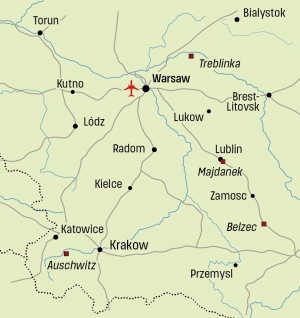
direct link
Subscribe to Our E-Newsletter
For up to date news as well as details about all of our tours please subscribe to our fortnightly e-newsletter

Quick Links
Military History and Battlefield Tours Classical History and Archaeological Tours Holocaust Tours General History Tours Experience Tours Walking Tours Future Planning Request Brochure Site Map
The Cultural Experience 11B Mansfield Park Four Marks Alton GU34 5PZ United Kingdom
UK: 0345 475 1815 USA (toll free): 877 209 5620 International: 00 44 345 475 1815
© 2015 - 2024 Midas Tours Ltd - Hosted by SWD - Legal Info - Terms of Use - Privacy Policy / Cookies - Sign-in

GoNOMAD Travel
Inspiration and links to plan your trip.
Visiting Nazi Concentration Camps in Poland
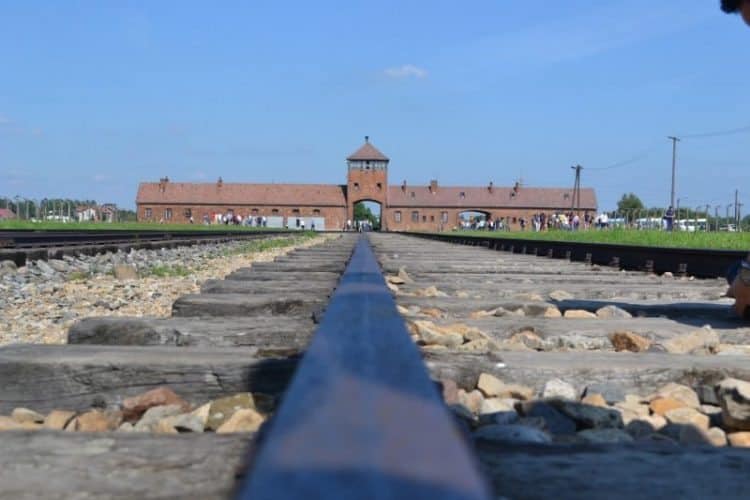
World War II Concentration Camps: Why You Need To Go
By Vanessa Gibbs
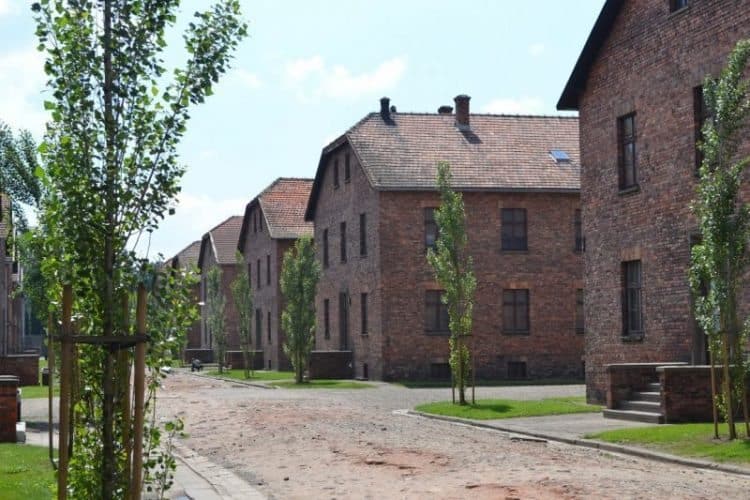
‘The one who does not remember history is bound to live through it again’ – George Santayana.
These are the words I repeat to myself, over and over, as I walk through one of the most harrowing times in human history.
It was a warm June morning in Krakow, Poland . The main square bubbled into life as the city started to wake up. The fairy tale facades shimmered in the sunlight as locals and tourists spilled into the city streets.
But instead of joining them, I climbed into a tiny tour bus heading towards the concentration camps of World War II.
There are some sides to a country’s history we’d rather ignore. The ugly sides, the unfair sides, the sides which remind us of a dark and cruel past. But ignoring sometimes means forgetting, and forgetting is something we cannot afford to do.
The Concentration Camps

The two camps we visited, Auschwitz I and Auschwitz II-Birkenau, were built during World War II by the Nazis in Oświęcim, a Polish town west of Krakow.
They served as the center of the mass extermination of Jews, Poles, Roma Gypsies, and other ethnic groups.
I’d learned the basics of the camps at school but beyond that, I had, perhaps selfishly, chosen not to read, watch, or learn anything else about them. It’s a tough topic to voluntarily spend time with, and yet, here I was. Approaching the same gates that so many people before me had approached, an estimated 1.1 million of them meeting their death on the other side.
Auschwitz I
The first camp on our tour was Auschwitz I. Originally built to serve as Polish army barracks, these buildings were taken over by the Nazis and transformed into prisons and death camps for the thousands brought here.
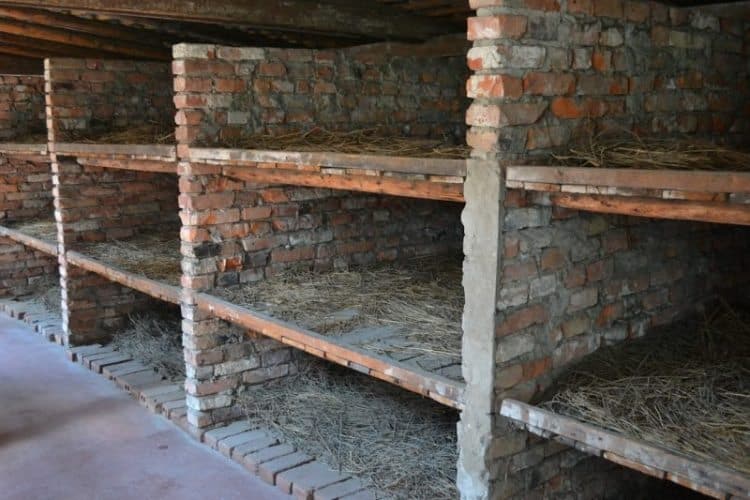
From the outside, it didn’t feel like a death camp. With tree-lined pathways, brick buildings and large patches of grass, it was almost pretty in the June sunlight. Almost.
Walking inside the barracks, however, we were quickly reminded of where we were. A number of buildings have been transformed into museum spaces detailing what life was like at the camp.
In one hallway, photos lined the wall. Upon arrival, each inmate was photographed and their date of birth, deportation date and nationality listed. When the prisoner population got too high, the Nazi’s began tattooing people to keep track.
That hallway was particularly tough to walk through. Reading names and seeing face after face, knowing now all too well what awaited each one of them.
I found it all hard to digest but some displays were particularly haunting.
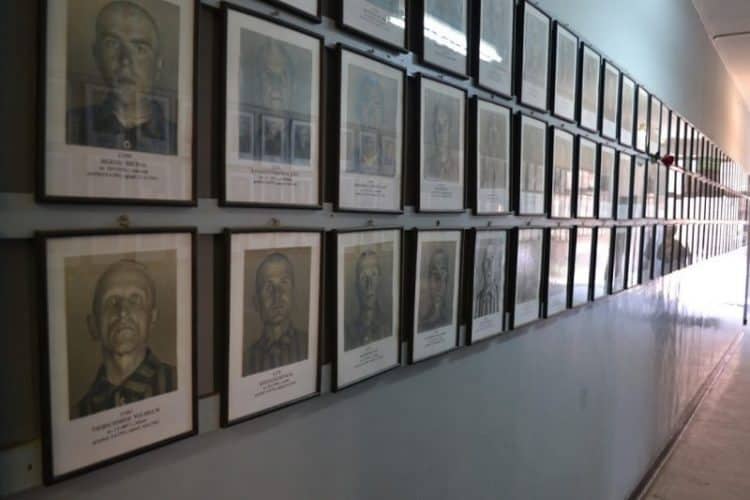
When the prisoners arrived, they were stripped of their belongings and shaved. But nothing was wasted.
Everything was kept, cataloged, and now displayed in their unimaginable numbers.
Piles upon piles of toothbrushes, watches, suitcases, glasses, clothing, and shoes all laid behind glass cases. It was a stark visual representation of the sheer number of people that suffered here.
In the next room, there was an enormous pile of hair weighing over 6.6 tons. It was human, it was real, and there was so so much of it. I found this one of the most difficult things to see on the tour. I have never been so close to something so horrific.
Taking photos wasn’t allowed here but I don’t think I could have taken any even if they were. It was sickening and I left that room feeling so much pain.
Stepping back outside into the bright sunlight, we went to see an execution spot. Flowers and tributes surrounded what was called the ‘Death Wall’ where thousands of prisoners were shot. I couldn’t help thinking that perhaps they were the lucky ones, knowing how so many others were killed.

We then entered Block 11, known as the Death Block. We were led down cold concrete steps and into a basement to see various torture rooms. Here, prisoners were subjected to immense darkness, starvation, and forced to stand in cramped conditions for days.
Being in the same rooms as where these atrocities had taken place, seeing the same walls and doors which those victims had seen, it was heart-wrenching. I struggled to accept that this had happened. It felt like a horror film or a fictional story, not a very real, very nonfictional time in history.
Next, we went inside a gas chamber. Our group shuffled through in silence, everyone hesitating to lift their heads. The air felt thick and oppressive. Seeing the holes in the ceilings where gas pellets were dropped and the machines used to burn bodies felt like the words of history books were suddenly laid out in front of me.
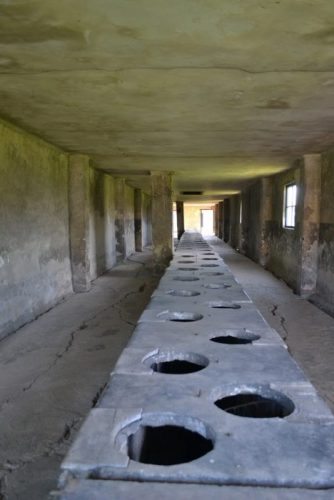
I found myself wanting to turn away and ignore everything. I desperately wanted to believe this was all just a horrible, horrible joke.
Auschwitz II-Birkenau
We caught a shuttle bus taking us the 1.2 miles to Auschwitz II-Birkenau. Built in 1942 due to overpopulation in the first camp, Birkenau became a labor and extermination site, the largest in human history.
The scale of the Holocaust hit home seeing this camp. That large number, 1.1 million deaths, is just that, a large number. It was hard to imagine. But piece by piece this tour solidified the sheer size of the genocide.
If the piles of belongings didn’t do it, the endless space of Birkenau definitely did. Walking through the main gate, the almost 500 acres of land stretched out in every direction. Rows upon rows of ruins were circled by roads and barbed wire fences.
From the front gate, railroad tracks stretched out towards the remains of more gas chambers. Upon arrival, a selection would take place where those deemed healthy enough to work were registered for forced labor and those who weren’t were taken to these chambers and murdered immediately.

We toured the barracks where inmates slept. Tiny, bunk bed style spaces were used to house hundreds of people at once. The bathrooms were long stretches of latrines. Everything was basic, inhumane and echoed the cruelty that happened here.
As the war was ending, the Nazis tried to destroy any evidence of what had taken place at Auschwitz. Many barracks were burnt down and gas chambers were blown up with dynamite. But the tell-tale scars can still be seen. Chimneys, ruins, and pits of ashes still remain a stain on the Polish landscape.
Leaving the Camps
After touring both camps, our group climbed back into our bus and stared out the windows as we left Auschwitz behind.
I felt emotionally drained. I was shocked by the systematic and purposefully engineered brutality of it all.
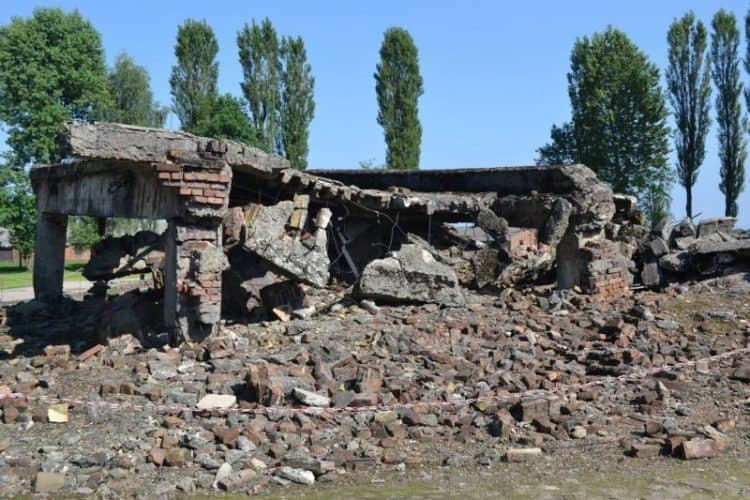
Even harder to comprehend was that this horror of humanity didn’t happen in some distant time, by some forgotten civilization. It was only 1944, only a generation or two before us.
There are still survivors alive today. There are still former Nazi guards alive today, a number of whom haven’t been convicted for their crimes. Visiting these camps made the Holocaust feel so real and so close.
I left feeling ashamed and powerless but also truly believing that everyone should see Auschwitz. It’s distressing but valuable and I’d argue necessary. To see them is to remember, and to remember, is to ensure that no one lives through it again.
Auschwitz Tours
- Website: http://bit.ly/2dfwAbM
- Price: $38USD
- Hotel pick up and drop off
- Duration: 7 hours
- Website: http://bit.ly/2e5bEWE
- Price: $44USD
- Duration: 6 hours
It’s possible to get to Auschwitz from Warsaw with many tours offering hotel pick up, including Viator.

Vanessa Gibbs is a London-based freelance writer who writes about all things travel and lifestyle and likes to scuba dive and fill up passports. Find out more: www.vanessagibbs.com Say hi: @ness_gibbs

- Latest Posts
- Woman Traveling Solo on Turkish Buses - March 27, 2024
- Florence: A Self Guided Walking Tour - March 20, 2024
- Useful Products for a New Year - March 20, 2024

5 thoughts on “ Visiting Nazi Concentration Camps in Poland ”
Plan to visit Poland in April 2022, will Auschwitz Concentration Camp be open? Information on tickets, etc would be so helpful! Live in the United States!
I took my Saint John’s University (MN), to Poland in 1976. We were invited to tour and play basketball for three weeks. We visited many of the concentration camps and Aushwitz was life changing for many of our players. It was a very quiet bus ride back to our hotel.
Cracov is near 😉 Must go there too!
Hi I am a Singaporean, who is visiting Poland in Christmas period. Could I know if it is opened in the period of Dec 27-30 .
Stanley is my name, many thanks and appreciate
I visited Aushwitz in 2006 and it was a very unique experience. Although I would never go back there, I guess I needed to see with my own eyes all the craziness that happened there.
Leave a Reply Cancel reply
Your email address will not be published. Required fields are marked *
Insert/edit link
Enter the destination URL
Or link to existing content
Select the type of the visit
Due to conservation reasons, some grounds of the Museum may be closed to visitors.
IMPORTANT NOTICE: The only official website with entry cards to visit the Auschwitz Museum is visit.auschwitz.org. The Museum is not responsible for bookings made on any other sites
In order to enter the Auschwitz Memorial all visitors, also those coming in organized groups, must have their personalized entry pass and ID with them. All guided tours start at former camp Auschwitz I.
Copyright © 2014 Państwowe Muzeum Auschwitz-Birkenau. All rights reserved

- South Africa
- El Salvador
- Bosnia and Herzegovina
- North Macedonia
- Czech Republic
- Transnistria
- Liechtenstein
- North Cyprus
- New Zealand
- Map with posts
- Alternative Guides
- Architecture Guides
- Cafe Guides
- Itineraries
- Neighborhood Guides
- Travel Guides
- Travel Tips
- Photo Galleries
- Photo Locations
- Solo female travel
- Train Travels
- Work with me
- Privacy Policy
Visiting Auschwitz – How to Plan the Auschwitz Tour
Visiting Auschwitz, albeit a very somber experience, is one of the must things to do in Poland. The largest Nazi Germany concentration and extermination camp during World War II, where over 1,3 million people lost their lives, needs no introduction. Conveniently located near Krakow , Auschwitz can be an easy addition to your Poland itinerary.
It took me almost 37 years to finally visit Auschwitz (although I’ve been to other Nazi Germany camps in Poland), and even if I knew very well what to expect, the place still overwhelmed me with its cruelty and tragedy. And I think everyone should plan a trip to Auschwitz to understand history better and see what people are capable of when the ideology brainwashes them. And, of course, to pay respect to all the unnecessary victims. It’s important to visit places like Auschwitz so we can do our best to prevent similar tragedies from happening in the future.

If you are visiting Poland (especially Krakow , Warsaw , Katowice , or Wroclaw ), I prepared this guide to help you plan your Auschwitz tour without too much hassle. There are different ways to visit Auschwitz, but no matter which one you choose, be prepared for one of the most difficult yet necessary travel experiences of your life.

Table of Contents
Where is Auschwitz
The former Nazi Germany Concentration Camp, Auschwitz-Birkenau, is located in a town of around 37.000 inhabitants called Oświęcim in southern Poland. Krakow is less than 70 km away, and Katowice is 35 km away. Warsaw, the capital of Poland, is around 330 km away from Oświęcim.
A brief history of Auschwitz
Even if Auschwitz is known mainly as the extermination camp, it was established as a concentration camp in mid-1940. It was one of over 40 camps in Poland that were supposed to be a solution to the problem of overflowing prisons full of arrested locals. The first people were brought to Auschwitz on June 14th, 1940, from the prison in Tarnow.
Since 1942 Auschwitz has also been used as the extermination camp where Nazis implemented their plan to murder Jewish people from all over Europe. At the peak of its operation, in 1944, Auschwitz was divided into three parts: Auschwitz I (the oldest one, in the old Polish military barracks), Auschwitz II-Birkenau (the largest one, founded in 1941, the majority of victims were killed here), and Auschwitz III (this was a group of over 40 sub-camps created near industrial plants, made for work prisoners).
Numerous Polish villages were demolished, and locals were evicted to develop such a large institution. The camps were isolated from the outside world. The total area was around 40 square kilometers, including all three Auschwitz camps and the so-called “interest zone” used for the technical or supply background, offices, and barracks for Nazis.
Since Auschwitz had a strategic location on the front line, in August 1944, the camp’s liquidation began – the prisoners were taken to Germany, and the evidence of the crimes was covered up. The liberation of Auschwitz took place on January 27th, 1945, when around 7,5 thousand prisoners were still held there.
Altogether, in the almost four years of operation, over 1,3 million people lost their lives in Auschwitz; the majority were Jewish (around 1,1 million), but also Polish (about 150 hundred thousand), Roma people (23 thousand), and other nations.
In 1979 Auschwitz was included in the UNESCO World Heritage List – it is the only former Nazi concentration camp with that title in the world.
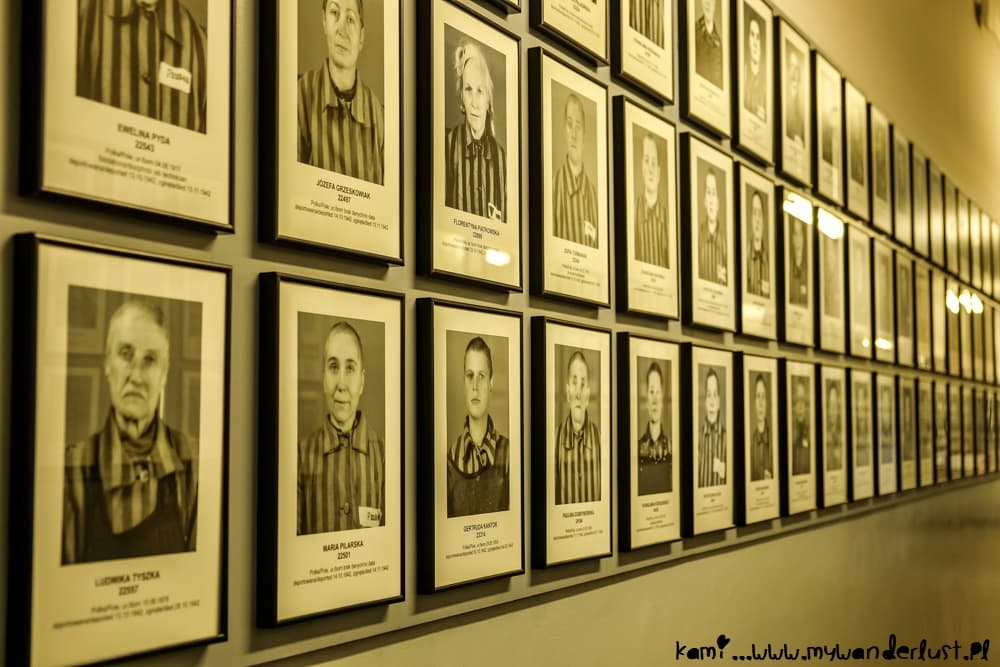
How to visit Auschwitz
You can visit Auschwitz two ways: with a tour from where you are staying in Poland (most likely Krakow, Katowice, Warsaw, or Wroclaw) or independently, reaching the site by car or using public transport. Both options are doable; however, the tour is a slightly better one as everything will be taken care of for you.
There is a wide selection of tours to choose from that depart from Krakow as well as other mentioned cities. Most of them cover more or less the same things: pick-up from your accommodation, transportation to/from Auschwitz and back, the entrance ticket to the concentration camp, and the guided tour on-site.
When I visited Auschwitz, I arrived by train from Warsaw, with the change in Katowice. I was at the museum almost an hour before my guided tour of the site was supposed to start, and despite the poor weather (it was raining on that day), there was no place to hide and wait for the tour. Visitors were not allowed to enter the museum until a few minutes before the tour was about to start. Me and a few other unlucky visitors just stood near the trees, hiding under the umbrella and waiting for our time to enter the site. I can’t say it was a comfortable situation (but at least the weather worked perfectly well for such a sad place to visit). Recently, a new visitors center was opened so hopefully the situation is better.
When using public transport, you need to rely on the schedule of trains/buses and, just in case, plan to be at the site with some extra time ahead; hence a tour is a better option. Still, visiting Auschwitz is doable independently – I did it, and once the tour of the site started, it was really good.

Visiting Auschwitz – practical information
Visiting Auschwitz memorial site is free of charge; however, I recommend joining the tour with the educator provided by the museum. They have a huge knowledge of the place and the tragedy that occurred here and can answer all the questions visitors always have. Tours are available in various languages: Polish, English, German, French, Spanish, Italian, Russian, Czech, and Slovak.
Even if you decide to visit the site independently, you still need to book the entry pass – those with free entrance start in the afternoon. You can buy/reserve your ticket online at the website of Auschwitz Museum here.
Currently, the price for the tour with the educator is 80 PLN for Polish and 90 PLN for other languages. When booking the ticket, you must state your full name and surname – this will be checked later.
Since tickets can sell out quickly, booking one at least a month in advance is recommended. If there are no tickets left for the day you want to visit Auschwitz, you can join the organized tour from Krakow or other cities, as tour operators usually have tickets booked in advance. Due to the sensitive nature of the place, children under 14 years old should not visit Auschwitz Museum.
Once you have your ticket, you need to arrive at the Auschwitz visitors center 30 minutes before your tour starts to go through the security check (it’s rather thorough, similar to the airport), have your ticket inspected (remember to have the ID or passport with you), get the headset for the tour and meet your group. You are allowed to have a bag or backpack with a maximum dimension of 30x20x10 cm; any larger luggage must be left in the paid lockers.
Auschwitz Museum is open every day except January 1st, December 25th, and Easter Sunday. Opening hours vary depending on the month and are as follows:
- 7:30-14:00 in December
- 7:30-15:00 in January and November
- 7:30-16:00 in February
- 7:30-17:00 in March and October
- 7:30-18:00 in April, May, and September
- 7:30-19:00 in June, July, and August
The closing time means the last entrance – after that, you are allowed to stay on-site for an hour and a half. However, if you want to see Auschwitz Museum properly, you need at least 3,5 hours for that – that’s also how long the standard tour with the educator lasts. It is usually divided equally between Auschwitz I and Auschwitz II- Birkenau. A free shuttle bus runs between the two sites every few minutes.
Taking pictures and making videos is allowed in Auschwitz, for individual use, except in two places: the hall with the hair of Victims (block nr 4) and the basements of Block 11. Your educator will remind you not to take pictures there.
Remember what sort of place you are visiting and behave there with respect. It might be obvious for most, but I can’t count how many times I’ve read news about inappropriate behavior in Auschwitz and other similar sites in Poland, so I think it’s worth reminding this is not your typical tourist attraction but a place of one of the greatest tragedy that ever happened in the world.

Getting to Auschwitz independently
If you decide to visit Auschwitz on your own, you must get to the visitors’ center, where your tour will start. The new visitors center, which opened just recently, is located at 55 Więźniów Oświęcimia Street in Oświęcim ( here is the exact location ). If you drive there, there is a large parking lot where you can leave your car before visiting the museum.
If you use public transport, there are both trains and buses you can take to reach Oświęcim. I recommend trains as they are slightly faster and more comfortable; however, some buses stop next to the museum, so that’s convenient. You can check all the connections on this website , where you can also find the location of the bus stop in Oświęcim (there can be three different ones).
The train station in Oświęcim is located at Powstańców Śląskich Street, some 20 minutes walking from the Auschwitz museum. It’s a straightforward way; you can check the map with the directions here . I recommend catching the train that gives you at least an hour between arriving at Oświęcim and when your tour starts.

Auschwitz tour from Krakow
Numerous Auschwitz tours depart from Krakow, so you will easily find the one that suits your itinerary and needs. Here are some recommended ones:
- Auschwitz-Birkenau Museum and Memorial Guided Tour from Krakow
- Auschwitz & Birkenau – Fully Guided Tour from Krakow
- Auschwitz-Birkenau Guided Tour with Private Transport from Kraków
- Auschwitz-Birkenau Guided Tour by Private Transport from Krakow
You can also combine visiting Auschwitz with Wieliczka Salt Mine , another UNESCO-listed site near Krakow and a must-visit place in Poland. Here are the tours that go to both places in one day:
- Day Trip to Auschwitz-Birkenau and Wieliczka Salt Mine from Krakow including Lunch
- Full-Day Tour of Auschwitz and Wieliczka Salt Mine from Krakow
- Auschwitz-Birkenau and Salt Mine Tour with private transport from Krakow
- Combined: Auschwitz Birkenau and Salt Mine private chauffeur from Krakow
If you decide to go to Auschwitz from Krakow on your own, you can take the train from the main train station to Oświęcim. They are rather frequent, more or less every hour, and the journey takes a bit over an hour (depending on the connection, the longest one is 1h20min).
If you want to take the bus, they depart from the MDA bus station, next to the main train station. The price for trains and buses is similar, between 15 and 20 PLN, although trains tend to be cheaper and faster. You can check all the connections and buy a ticket here .

Auschwitz tour from Warsaw
Even if Warsaw, the capital of Poland, is located over 300 km away from Oświęcim, it is possible to go for a one-day Auschwitz tour. However, you can expect a long day, and a large part of it will be spent traveling. But if you are visiting Warsaw only, Auschwitz can be a good addition to your Poland itinerary, so you can better understand the country’s complex history.
Here are some of the recommended Auschwitz tours from Warsaw:
- From Warsaw Auschwitz and Krakow one day tour by train with pick up and drop off
- One day tour to Auschwitz-Birkenau from Warsaw with private transport
Going for the day trip from Warsaw to Auschwitz independently is also possible using trains. You can take the 6 am train to Katowice and then change for the train to Oświęcim, arriving in the town around 10:30. If you decide to do that, you can book your Auschwitz tour for 11:30 or 12:00. On the way back, you can catch the train after 16:00 from Oświęcim to Katowice, and after changing for the train to Warsaw, you will be in the capital after 20:00.

Auschwitz tour from Katowice
Since Katowice is less than 40 km from Auschwitz, it’s easy to go for a day trip. You need to take the local train to Oświęcim, it takes less than 50 minutes, and the connections are more or less every hour.
Or you can go for a tour, here are the Auschwitz tours from Katowice:
- Auschwitz – Birkenau from Katowice
- Auschwitz & Birkenau English guided tour by private transport from Katowice
- Auschwitz tour from Wroclaw
Wroclaw is another popular place to visit in Poland, and since it’s located around 230 km from Oświęcim, you can go for an Auschwitz tour from Wroclaw too. If you decide to do it independently, you can take the train to Katowice and then change for the local train to Oświęcim. A one-way trip should take you less than 4 hours.
Or you can go for a tour; here are the recommended ones from Wroclaw:
- Auschwitz-Birkenau Tour from Wrocław
- Private Full-Day Tour to Auschwitz-Birkenau from Wroclaw
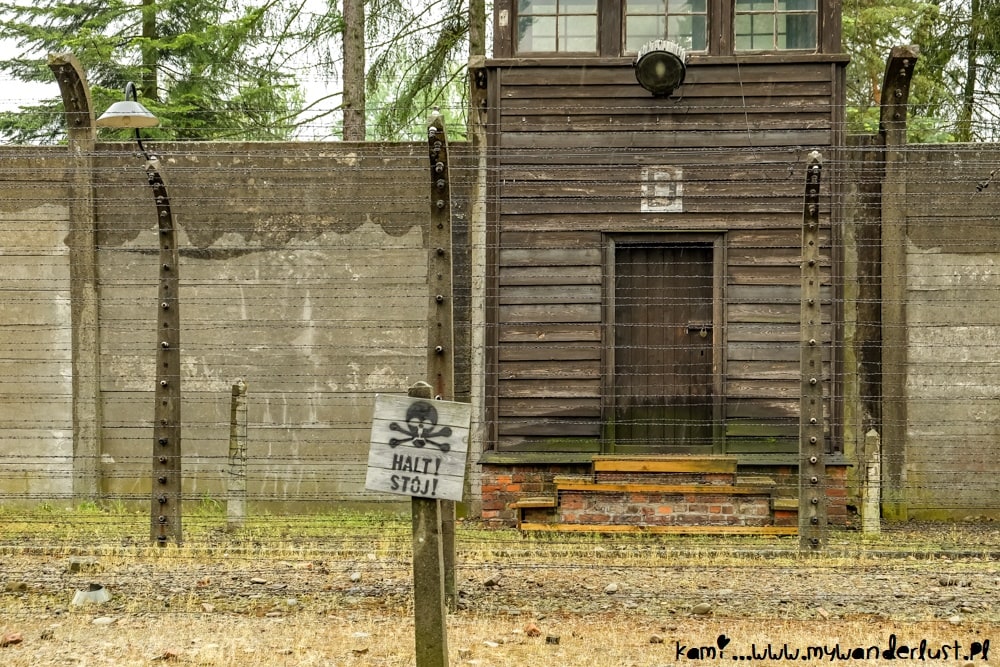
Auschwitz Museum Tour
As for the museum itself, here is what you can expect.
You will start in the oldest part of the concentration camp – Auschwitz I, where the infamous gate with the sign “Arbeit macht frei” (meaning “Work Sets You Free”) is located. Here, you will visit numerous barracks where inmates were kept – now you can see different exhibitions there, showing the reality of Auschwitz and halls with personal belongings taken from arriving prisoners – luggage, shoes, glasses, etc., or hair of Victims. You will learn all about cruel practices here, including medical experiments or torture.
Visiting this part of Auschwitz museum is a very somber experience, and it’s really difficult to comprehend the tragedy that happened in this very place.
Besides the barracks in Auschwitz I, you will also see where the camp commander lived or the first crematorium where Nazis started their experiments with killing using gas. In this part of the Auschwitz tour, you can take pictures everywhere except the two places in Blocks 4 and 11 – they will be clearly marked, and your educator will remind you about this restriction.
The visit to Auschwitz I takes around 1,5 hours. Afterward, together with your group and educator, you will take the shuttle bus to Auschwitz II-Birkenau, located some 3 km away.

Auschwitz II-Birkenau is where around 90% of victims died. It is a huge area that worked kind of like the killing factory, with four gas chambers and crematoriums. This is also where most prisoners arrived – you most likely know the view of the railway tracks and brick gate – that’s Auschwitz II-Birkenau. This part of the visit is mostly outdoors.
You will walk around the area, see the remnants of the camp, visit some barracks inside, and learn all about the horrific tragedy that happened here. When Auschwitz I has a more intimate, even claustrophobic feeling, Auschwitz II-Birkenau can overwhelm you with its scale and enormity.
You will spend around 1,5 hours here, too; afterward, you can take the shuttle bus back to the visitors center when you started your tour.
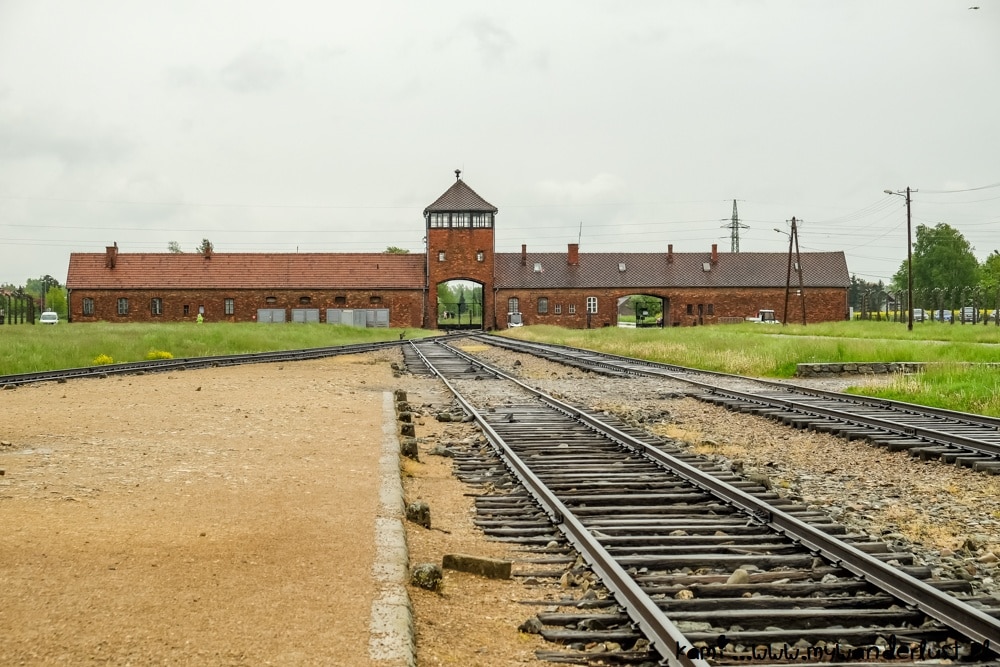
Final thoughts on visiting Auschwitz
Even though I’ve lived in Poland almost my whole life, and Auschwitz has been a familiar topic since I remember, it took me nearly 37 years to finally visit the place. Before I was in different Nazi Germany sites in Poland, mostly in Majdanek in Lublin, so I didn’t feel the need to visit Auschwitz too. But I don’t regret the decision to go there eventually.
You can read and learn about the place, but nothing can prepare you for visiting Auschwitz. Some areas look familiar (after all, pictures of the “Arbeit macht frei” sign or Birkenau gate are present everywhere), but you will still be overwhelmed by the place and seeing it in real life. It’s hard to comprehend the cruelty and tragedy that happened here, and dealing with all the thoughts invading your mind afterward can take a while. It can be one of the most difficult-to-understand places you will ever visit.
Still, despite it all, I think everyone should go to Auschwitz to see where fanaticism and totalitarianism can lead and why we should avoid them at all costs.
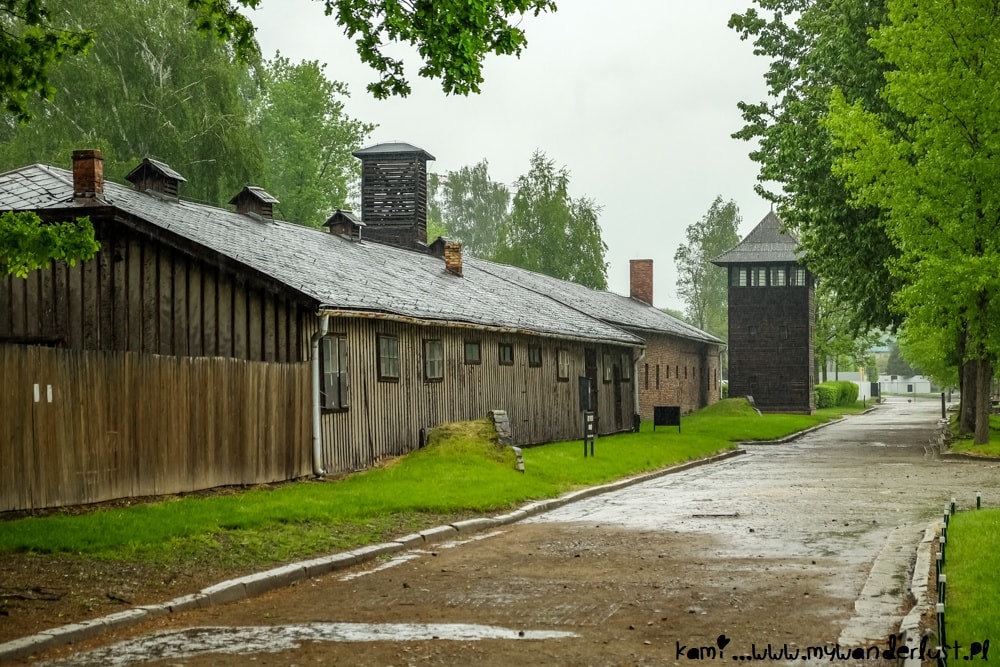
Travel Resources
You can find the best accommodation options at Booking . They have many discounts and excellent customer service. Click here to look for the place to stay in Poland
Never travel without travel insurance , you never know what might happen and better safe than sorry. You can check the insurance policy for Poland here.
I recommend joining organized tours to get to know the place better and to visit more places during your trip. You can find a great selection of tours at Get Your Guide – click here .
For the end I left a few announcements that might interest you:
- Sign up to my newsletter or follow me on Bloglovin to get updates about the new posts
- Join my Facebook group about Eastern Europe, the Balkans and former USSR and connect with fellow travellers and enthusiasts of these regions – just click here!
- I’ve included a few handy links of services and products I personally like and use so you can plan your own trip to Poland too. They are often affiliate links. This means I will get a small commission if you book/purchase anything through my links, at no extra costs for you. Thank you!
LIKED IT? PIN THIS POST FOR LATER!
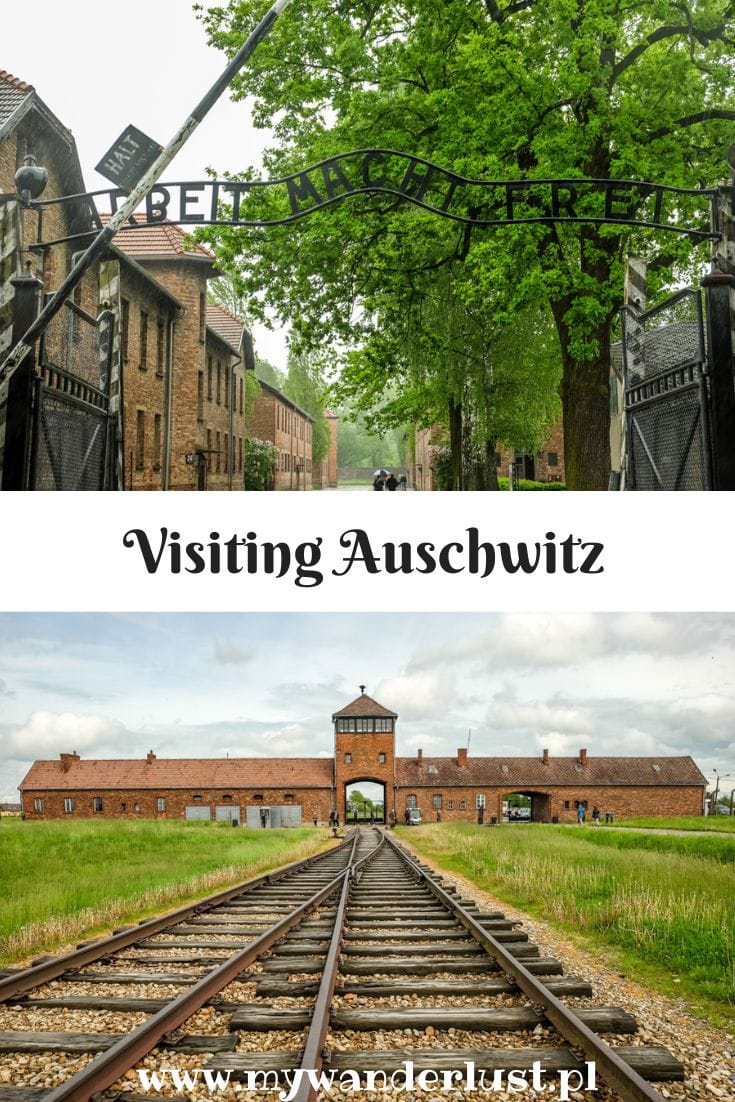
If you enjoyed that post why don't you share it with your friends? That would mean so much to me! Also be sure to join 30.000+ fellow travelers and follow me on Facebook , Twitter , or Instagram for travel updates and even more pictures! If you don't want to miss new posts sign up to my newsletter or follow on Bloglovin !

No Comments
Leave a reply cancel reply.
Sign me up for the newsletter!
Let’s become friends!
Join me on Facebook for even more travel updates!
Kami and the rest of the world
Deals of the Week Green Hikes & Treks Up to 50% OFF
Tours & Trips including Auschwitz 2024/2025
Find the right tour for you through Auschwitz. We've got 153 adventures going to Auschwitz, starting from just 3 days in length, and the longest tour is 35 days. The most popular month to go is August, which has the largest number of tour departures.
153 Auschwitz tour packages with 1,132 reviews
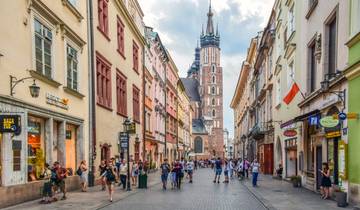
- In-depth Cultural
Krakow & Auschwitz
Did their Krakow, Poland trip in December during the Christmas markets. Really a great trip and experience. Everything was very organized, had really good hotel near the square/old town (I booked the 3-star hotel, private room option with my husband), guides were very good & knowledgeable and the excursions/tours were very good. We also received a lot of extra information and recommendations for things to do and places to go (food and drink too) in our free time which was really nice and helpful. I was a bit nervous reading a few of the reviews here on Yelp but our experience was fantastic and nothing like what some others wrote in their reviews. Krakow was an amazing city and one of the most beautiful in Europe. Definitely recommend this trip and company.
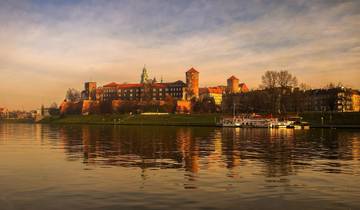
- Christmas & New Year
Krakow, Auschwitz & Wieliczka Salt Mine - 4 Days
What can we say about this absolutely beautiful city, and about the beautiful young man who led our tour? Seweryn was knowledgeable, personable, intelligent, warm and sensitive. We loved every minute of our walking tours and he chose great drivers to take us to the tours he did not lead (Salt Mine and Auschwitz.) We will always feel a little homesick for Krakow, and for our new Polish “son,” Seweryn. ❤️
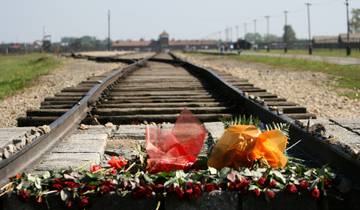
Krakow, Auschwitz, Enamel Factory & Wieliczka Salt Mine - 4 Days
Fantastic tour although the Salt Mine I would skip on my next trip. Our guide Seweryn was the best. He made everything so real and down to earth. He gives you so much information. I Would recommend him to everyone. Twice as good with him as our guide Great trip we visit again.
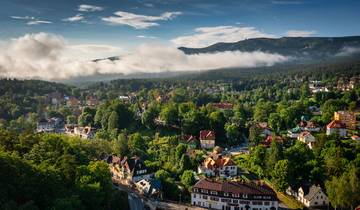
- Coach / Bus
Highlights of Southern Poland
The Poland tour was excellent! The group leader Beata was awesome and all guidance, planning and itinerary was wonderful. Totally recommended!!

- Sightseeing
Pearls of Poland (for couples)
Kuba was extremely knowledgeable and contributed considerably to our understanding and enjoyment of the spots we saw. He was sensitive to my mother's special needs and programmed stops in the tour so she could rest. He also showed up on our final day with special Polish donuts for us to enjoy -- a thoughtful and very sweet gesture. We recommend Kuba highly!

6 days in Krakow and Szczawnica- private exclusive tour for 2 people
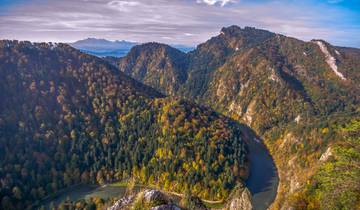
6 days in Krakow and Szczawnica- private exclusive tour for 3-4 people

Highlights of Poland (Classic, 10 Days)
The trip was fantastic. Everything was well planned and our guide, Krzysztof Piechowicz, was beyond excellent. The hotels were excellent and the meals very good. We’d recommend TourRadar and this trip without any hesitation.

Highlights of Poland
Tour was very informative and loved seeing the various regions of Poland. Our guide Justyna was awesome! Loved her energy and love for Poland. She had great recommendations for optional tours and tasty Polish restaurants and bars. We did do a lot of walking with local guides and loved learning more about Polish history and people. The hotels were average.
- 10% deposit on some dates Some departure dates offer you the chance to book this tour with a lower deposit.

Portrait of Poland
The hotel In Gdansk was awful There were hotels near town that were the same rate and we could have gone into old town after dinner. I didn’t like not having a choice for dinner. We all ate the same. The hotel in Krakow was close to a Shopping center not close to what makes Krakow special. The hotel in Krakow could have been a whole lot better . We spent 3 nights there but we were not close to go to old town after dinner

Tailor-Made Private Trip to Southern Poland with Daily Departure
- Book With Flexibility This operator allows you to rebook your dates or tours with them for free, waiving change fees.
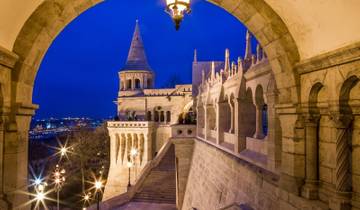
Best of the East
Such a fun and alternative trip to take! We went to Prague, Poland, Budapest, and Austria. Even though it was one of the coldest weeks, our tour guide made it beyond enjoyable. She had so many suggestions of places to go and all were great. My favorite stop was Krakow, Poland, what a beautiful city and so much fun. I had an absolute blast while on this trips, the tour guide were energetic, fun, and knowledgeable, the trip was well run and flexible which I enjoyed, the company had optional activities set up for us which was nice to not feel pressured to do them if you wanted to explore on your own. The accommodations were always comfy and clean and the buses we took for all the trips were enjoyable and filled with fun movies to watch. I would highly recommend traveling with Euroadventures, their attention to detail, responsible yet fun guides, and flexible, activities filled schedule are all beyond worth it.

- Walking Adventure
Best of Poland (11 Days)
Outstanding tour guides, Kate, Sylvia and Robrick. They all worked so hard behind the scenes to make the trip so smooth and fun. Great choice of attractions, accommodations, meals and schedule. Knowledge of country and attention to details was amazing. Highly recommend this travel team and this tour for anyone wanting a great tour of Poland. Many Thanks, Randy and Diana Rickard
- €100 deposit on some dates Some departure dates offer you the chance to book this tour with a lower deposit.

Tailor-Made Private Poland Tour with Daily Departure

Highlights of Poland (Small Groups, 10 Days)
What people love about auschwitz tours.
Did their Krakow, Poland trip in December during the Christmas markets. Really a great trip and experience. Everything was very organized, had really good hotel near the square/old town (I booked the 3-star hotel, private room option with my husband), guides were very good & knowledgeable and the excursions/tours were very good. We also received a lot of extra information and recommendations for things to do and places to go (food and drink too) in our free time which was really nice and helpful. I was a bit nervous reading a few of the reviews here on Yelp but our experience was fantastic and nothing like what some others wrote in their reviews. Krakow was an amazing city and one of the most beautiful in Europe. Definitely recommend this trip and company.
Seweryn was a fantastic tour guide and very knowledgeable about Krakow's history. I enjoyed learning about the many historical and religious details we saw around Krakow. He also went above and beyond to help me when I had trouble purchasing train tickets, and when I got sick offered to reschedule one of the tour days. I really enjoyed his tour and would highly recommend it.
I had a great first time experience of Krakow through this tour. My tour guide Seweryn was very friendly, flexible, organised and helpful and made the whole process very smooth. The trips to the mine, factory and camps were well laid out and gave me plenty of time for independent sightseeing and fun. If you want to come to Krakow I would highly recommend you do a trip this way!
International Versions
- Deutsch: Auschwitz Rundreisen
- Français: Circuits et voyages au Auschwitz
- Español: Circuitos y viajes por Auschwitz
- Nederlands: Auschwitz Rondreizen


Guided tours options
Guided tours options. prices..

We offer visitors several options for guided tours. Each includes tours of Auschwitz I and Auschwitz II-Birkenau.
• General tours (3,5 h) • Guided tours for individual visitors (3,5 h) • One or two-day study tours (6 h or 3+3 h) • General tours - shorter version before closing hours (2,5 h) • Online tour (2 h)
Because of a large number of visitors guides should be reserved at least one month before a planned visit.
Visiting with a guide : price list
Attention! Prices are subject to change without prior notice.
Visitors arriving in groups are required to engage a guide-educator. This ensures efficient movement around the entire Museum grounds and full information about the museum, the buildings and their history, and the exhibitions. A fee is charged for guide services. Only guides-educators licensed by the Museum are authorized to serve visitors. Guides-educators are available to serve visitors in Croatian, Czech, Dutch, English, French, German, Hebrew, Hungarian, Italian, Japanese, Korean, Norwegian, Polish, Russian, Serbian, Slovak, Spanish, Swedish, Portuguese, Greek, and Ukrainian.
• General tours for groups and individuals (around three-and-a-half hours):
Tour of the permanent exhibitions and buildings at the Auschwitz I-Main Camp and the most important original camp buildings in Auschwitz II-Birkenau: prisoner barracks, the unloading platform (ramp), and the ruins of gas chamber and crematoria II or III.
• One or two-day study tours (6 hours or 2x3 hours): Specialist tour of the Auschwitz I and Auschwitz II-Birkenau camps, enhanced with selected national exhibitions, the area of so-called Kanada, and the ruins of gas chambers and crematoria IV and V.
• General tours for groups and individuals - shorter version before the closing hours (around two-and-a-half hours):
Tour of the permanent exhibitions and buildings at the Auschwitz I-Main Camp and the most important original camp buildings in Auschwitz II-Birkenau: prisoner barracks, the unloading platform (ramp).
• Online tour (approximately 2 hours): The online tour is divided into two parts – in Auschwitz I and Birkenau. The guide's narration is conducted live. Additionally, the educator will also use multimedia materials, archival photographs, artistic works, documents, and testimonies of Survivors. Thanks to the application, interaction with the guide and asking questions is also possible.
It is possible at set times for individual visitors to assemble into a group and engage a guide-educator (in Polish, English, German, Franch, Italian and Spanish).
- via @auschwitzmuseum" aria-label="Udostępnij na Twitter">
Images from www.auschwitz.org may be used only in publications relating to the history of the German Nazi concentration and extermination camp Auschwitz-Birkenau or the activities of the Auschwitz Memorial. Their use must not tarnish the good reputation of the victims of KL Auschwitz. Any interference in the integrity of the images – including cropping or graphic processing – is prohibited. The use of the images for commercial purposes requires the Museum’s approval and information about the publication. Publishers undertake to indicate the authors and origin of the images: www.auschwitz.org, as well as to inform the Museum of the use of the images ([email protected]).
- History Classics
- Your Profile
- Find History on Facebook (Opens in a new window)
- Find History on Twitter (Opens in a new window)
- Find History on YouTube (Opens in a new window)
- Find History on Instagram (Opens in a new window)
- Find History on TikTok (Opens in a new window)
- This Day In History
- History Podcasts
- History Vault
By: History.com Editors
Updated: January 24, 2024 | Original: December 15, 2009

Auschwitz, also known as Auschwitz-Birkenau, opened in 1940 and was the largest of the Nazi concentration and death camps. Located in southern Poland, Auschwitz initially served as a detention center for political prisoners. However, it evolved into a network of camps where Jewish people and other perceived enemies of the Nazi state were exterminated, often in gas chambers, or used as slave labor. Some prisoners were also subjected to barbaric medical experiments led by Josef Mengele (1911-79). During World War II (1939-45), more than 1 million people, by some accounts, lost their lives at Auschwitz.
In January 1945, with the Soviet army approaching, Nazi officials ordered the camp abandoned and sent an estimated 60,000 prisoners on a forced march to other locations. When the Soviets entered Auschwitz, they found thousands of emaciated detainees and piles of corpses left behind.
Auschwitz: Genesis of Death Camps
After the start of World War II , Adolf Hitler (1889-1945), the chancellor of Germany from 1933 to 1945, implemented a policy that came to be known as the “Final Solution.” Hitler was determined not just to isolate Jews in Germany and countries annexed by the Nazis, subjecting them to dehumanizing regulations and random acts of violence. Instead, he became convinced that his “Jewish problem” would be solved only with the elimination of every Jew in his domain, along with artists, educators, Romas, communists, homosexuals, the mentally and physically handicapped and others deemed unfit for survival in Nazi Germany.
Did you know? In October 1944, a group of Auschwitz "Sonderkommando," young Jewish males responsible for removing corpses from crematoriums and gas chambers, staged a revolt. They assaulted their guards, using tools and makeshift explosives, and demolished a crematorium. All were apprehended and killed.
To complete this mission, Hitler ordered the construction of death camps. Unlike concentration camps, which had existed in Germany since 1933 and were detention centers for Jews, political prisoners and other perceived enemies of the Nazi state, death camps existed for the sole purpose of killing Jews and other “undesirables,” in what became known as the Holocaust.
Auschwitz: The Largest of the Death Camps
Auschwitz, the largest and arguably the most notorious of all the Nazi death camps, opened in the spring of 1940. Its first commandant was Rudolf Höss (1900-47), who previously had helped run the Sachsenhausen concentration camp in Oranienburg, Germany. Auschwitz was located on a former military base outside Oswiecim, a town in southern Poland situated near Krakow, one of the country’s largest cities. During the camp’s construction, nearby factories were appropriated and all those living in the area were forcibly ejected from their homes, which were bulldozed by the Nazis.
Auschwitz originally was conceived as a concentration camp, to be used as a detention center for the many Polish citizens arrested after Germany annexed the country in 1939. These detainees included anti-Nazi activists, politicians, resistance members and luminaries from the cultural and scientific communities. Once Hitler’s Final Solution became official Nazi policy, however, Auschwitz was deemed an ideal death camp locale. For one thing, it was situated near the center of all German-occupied countries on the European continent. For another, it was in close proximity to the string of rail lines used to transport detainees to the network of Nazi camps.
However, not all those arriving at Auschwitz were immediately exterminated. Those deemed fit to work were employed as slave labor in the production of munitions, synthetic rubber and other products considered essential to Germany’s efforts in World War II.
Auschwitz and Its Subdivisions
At its peak of operation, Auschwitz consisted of several divisions. The original camp, known as Auschwitz I, housed between 15,000 and 20,000 political prisoners. Those entering its main gate were greeted with an infamous and ironic inscription: “Arbeit Macht Frei,” or “Work Makes You Free.”
Auschwitz II, located in the village of Birkenau, or Brzezinka, was constructed in 1941 on the order of Heinrich Himmler (1900-45), commander of the “Schutzstaffel” (or Select Guard/Protection Squad, more commonly known as the SS), which operated all Nazi concentration camps and death camps. Birkenau, the biggest of the Auschwitz facilities, could hold some 90,000 prisoners.
It also housed a group of bathhouses where countless people were gassed to death, and crematory ovens where bodies were burned. The majority of Auschwitz victims died at Birkenau. More than 40 smaller facilities, called subcamps, dotted the landscape and served as slave-labor camps. The largest of these subcamps, Monowitz, also known as Auschwitz III, began operating in 1942 and housed some 10,000 prisoners.
Life and Death in Auschwitz
By mid-1942, the majority of those being sent by the Nazis to Auschwitz were Jews. Upon arriving at the camp, detainees were examined by Nazi doctors. Those detainees considered unfit for work, including young children, the elderly, pregnant women and the infirm, were immediately ordered to take showers. However, the bathhouses to which they marched were disguised gas chambers. Once inside, the prisoners were exposed to Zyklon-B poison gas. Individuals marked as unfit for work were never officially registered as Auschwitz inmates. For this reason, it is impossible to calculate the number of lives lost in the camp.
For those prisoners who initially escaped the gas chambers, an undetermined number died from overwork, disease, insufficient nutrition or the daily struggle for survival in brutal living conditions. Arbitrary executions, torture and retribution happened daily in front of the other prisoners.
Some Auschwitz prisoners were subjected to inhumane medical experimentation. The chief perpetrator of this barbaric research was Josef Mengele (1911-79), a German physician who began working at Auschwitz in 1943. Mengele, who came to be known as the “Angel of Death,” performed a range of experiments on detainees. For example, in an effort to study eye color, he injected serum into the eyeballs of dozens of children, causing them excruciating pain. He also injected chloroform into the hearts of twins to determine if both siblings would die at the same time and in the same manner.
Liberation of Auschwitz: 1945
As 1944 came to a close and the defeat of Nazi Germany by the Allied forces seemed certain, the Auschwitz commandants began destroying evidence of the horror that had taken place there. Buildings were torn down, blown up or set on fire, and records were destroyed.
In January 1945, as the Soviet army entered Krakow, the Germans ordered that Auschwitz be abandoned. Before the end of the month, in what came to be known as the Auschwitz death marches, an estimated 60,000 detainees, accompanied by Nazi guards, departed the camp and were forced to march to the Polish towns of Gliwice or Wodzislaw, some 30 miles away. Countless prisoners died during this process; those who made it to the sites were sent on trains to concentration camps in Germany.
When the Soviet army entered Auschwitz on January 27, they found approximately 7,600 sick or emaciated detainees who had been left behind barbed wire. The liberators also discovered mounds of corpses, hundreds of thousands of pieces of clothing and pairs of shoes and seven tons of human hair that had been shaved from detainees before their liquidation. According to some estimates, between 1.1 million to 1.5 million people, the vast majority of them Jews, died at Auschwitz during its years of operation. An estimated 70,000 to 80,000 Poles perished at the camp, along with 19,000 to 20,000 Romas and smaller numbers of Soviet prisoners of war and other individuals.
Auschwitz Today
Today, Auschwitz is open to the public as the Auschwitz-Birkenau Memorial and Museum . It tells the story of the largest mass murder site in history and acts as a reminder of the horrors of genocide.
Images from the Death Camps

Sign up for Inside History
Get HISTORY’s most fascinating stories delivered to your inbox three times a week.
By submitting your information, you agree to receive emails from HISTORY and A+E Networks. You can opt out at any time. You must be 16 years or older and a resident of the United States.
More details : Privacy Notice | Terms of Use | Contact Us
Emergency Banner Component
Warsaw, Budapest, Vienna & Prague – Honoring the Jewish Heritage
Select Year
Select the year you would like to travel.
- 2024 Classic
- 2025 Classic
Accommodations
- Pricing & Availability
- Important Info
Uniquely Tauck
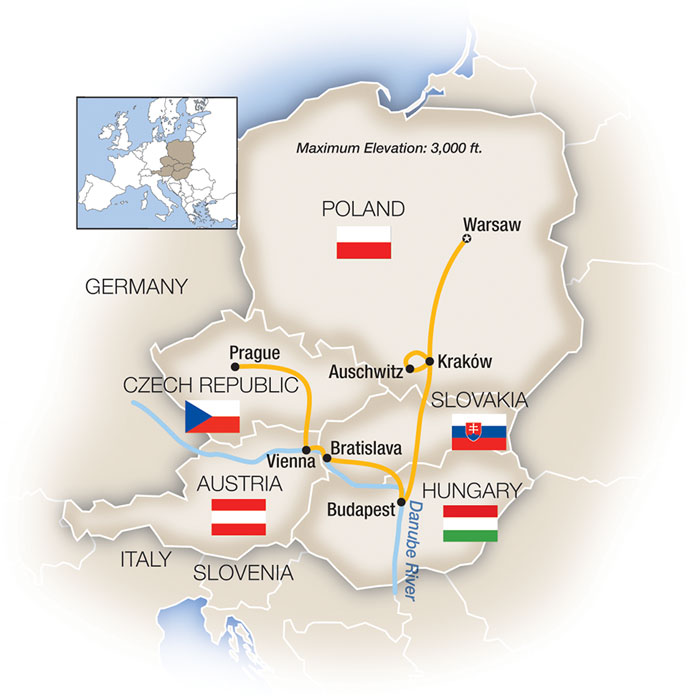
EXPERIENCE WITH TAUCK
Prayer and a Q&A with a Rabbi during exclusive, private access in the Frankel Synagogue in Budapest
TAUCK VALUE INCLUDES
Visits to the Warsaw Ghetto Memorial, Umschlagplatz, the Jewish Historical Institute, Nozyk Synagogue and the Museum of the History of Polish Jews (POLIN)
Visit to Plaszów concentration camp in Kraków
Visit to Poland's poignant museum and memorial at Auschwitz-Birkenau
Private piano recital of Chopin music in Warsaw
Walking tour of Budapest's Jewish Quarter; Dohány & Kazinczy synagogues
SEE WHAT YOUR JOURNEY INCLUDES
Active components such as hiking, bicycling and walking longer distances may be included, and hills and/or uneven terrain may be encountered on several days. Guests should be able to walk two to three miles and stand for long periods of time with no difficulty.
Often robust – may include long days, active sightseeing, early starts, evening activities, significant travel times.
Along Europe's Scenic "Yellow Roads"
Become immersed in the cultural legacies and poignant history of the Jewish communities of Warsaw, Budapest, Vienna and Prague on this special Jewish heritage tour. Emotionally stirring, historic sites are inextricably linked to their Jewish heritage, offering a chance to learn, in depth, reflect and remember the sacrifices that were made there.
Visit warsaw's holocaust memorials and polin, in warsaw, explore the warsaw ghetto memorial, nozyk synagogue, polin and more.
Before World War II, Poland was once home to the largest Jewish community in Europe, which had thrived for centuries in an environment of religious tolerance. Your time in Poland's capital, Warsaw, includes visits to Holocaust memorials including Nozyk Synagogue, the only one of Warsaw's 400 synagogues to survive the war; the memorial to the Warsaw Ghetto Uprising of 1943; the Umschlagplatz (the "taking away place"), the deportation point for thousands of Warsaw's Jewish Holocaust victims; and the internationally-acclaimed POLIN Museum of the History of Polish Jews, built on the site of the Warsaw Ghetto, which immerses visitors in the 1,000-year history of the Jews in Poland through interactive exhibits, reconstructions, and multimedia.
The Plaszów memorial and more
Your travels in kraków include the former schindler factory and the plaszów concentration camp memorial.
In Kraków's industrial district of Zablocie on the right bank of the Wisla River stands the former enameled vessels factory once operated by German industrialist Oskar Schindler, whose efforts to protect the lives of his Jewish workers was portrayed in the film, "Schindler's List." Today the former factory is a branch of the City of Krakow Historical Museum chronicling life in Krakow under German occupation, and includes several exhibits involving the story of Schindler and his workers. After a brief visit here, you'll continue on to pay your respects at the remains of and memorial to victims of Plaszów, the infamous forced labor camp turned concentration camp from which Schindler managed to save more than a thousand Jewish workers.
A poignant visit to the Auschwitz-Birkenau memorial
Visit the auschwitz-birkenau memorial outside kraków, and tour of the sites of both infamous camps.
Dating back to 1335, a re-emerging Kazimierz – Kraków's historic Jewish Quarter – thrives anew today with cafés and bistros, antique shops, museums and galleries… despite being nearly destroyed by the Nazis during the Holocaust of World War II. On a guided tour of the district, you'll visit the 15th-century Old Synagogue museum where exhibits showcase the history and traditions of Polish Judaism. Then, journey some 40 miles southwest of Kraków for a poignant visit to the memorial and museum at the former extermination camp complex at Auschwitz-Birkenau – including Blocks 4, 5, 7 and 11 at Auschwitz – followed by a tour of the Birkenau site.
Private luncheon cruise in Prague and Q&A with a Holocaust survivor
A private luncheon cruise on prague's vltava river and a q&a with a holocaust survivor.
For many of Europe's greatest cities, the rivers that flow through them are often their lifeblood and their defining feature. So it is with Prague, ancient capital of the Czech Republic, split by the Vltava River but joined by the historic Charles Bridge (and 17 others!). And there's no better or more unique way to experience the heart of this timeless city than aboard a private luncheon cruise on the Vltava through Prague's Lesser Town and Old Town. Also during your time in Prague, you'll be joined by a Czech concentration camp survivor for a poignant discussion of the Holocaust in wartime Czechoslovakia, followed by a memorable Q & A session.
Download, Print Or Share
Take The Details With You
Download day-by-day details.
All the information you need for this journey at your fingertips – day-by-day details, map, hotel descriptions, key highlights and more.
Where you stay is an important part of your journey – with Tauck, accommodations have been handpicked and carefully selected for their location and ambiance, enhancing the destinations you explore. Download accommodation details and your travel plans begin!
Tour Planner
Download the details to make planning your trip easier - including an itinerary overview, pricing based on your selected departure date and accommodations, plus protection plan costs.
Request A Tour Planner
Overnight Accommodations
Extend your stay
Arrive Early
Hotel bristol, warsaw.
Warsaw, Poland
Hotel Saski
Kraków, Poland
Kempinski Hotel Corvinus Budapest
Budapest, Hungary
Nights 8-10
Hotel Bristol, Vienna
Vienna, Austria
Nights 11-13
Four Seasons Hotel Prague
Prague, Czech Republic
Your Journey
Pricing & Availability
Pricing & Dates are not available yet. Please check back soon.
No departures found.
Try using less filters or select a different year.
Want More Detailed Information?
Request a Tour Planner
Call 800-788-7885
About Booking This Tour
Travel Documents
If you are a U.S. citizen traveling internationally, you will need a passport for six months beyond the completion of your Tauck journey to enter Poland, Hungary, Austria, Slovakia and the Czech Republic; however, you do not need a visa for the short duration of this tour.
The U.S. State Department advises that: "All foreigners seeking entry into the Czech Republic must also carry proof of a medical insurance policy contracted for payment of all costs for hospitalization and medical treatment while in the Czech Republic. According to the Czech Government, if you have a health insurance card or an internationally recognized credit card with health insurance included, it will generally be accepted as proof of insurance to enter the country."
Tauck offers insurance that is considered sufficient for this purpose. Please refer to the Tauck Travel Protection Product section above on this webpage for further details.
If you are a citizen of another country traveling internationally, you should contact an embassy or consulate of Poland, Hungary, Austria, Slovakia and the Czech Republic to determine what travel documentation is required.
Please note that longer stays abroad for any purpose may require additional travel documentation.
We recommend that you make at least two photocopies of all the travel documents that you bring with you. Include copies of the photo page of your passport that contains the date of issuance, the date of expiration and your citizenship. Secure one set of copies in the safe in your room while traveling and leave one set behind with someone at home who will assist you in the event your documents are misplaced, lost or stolen.
To facilitate Travel Requirements, destinations are increasingly utilizing online forms that require digital proof that you've successfully completed your submission (via an email, QR code, etc.) To ensure smooth travels and peace of mind, we strongly recommend all guests carry a personal smart phone and sign up for international data plans before traveling overseas.
TRAVELING WITH CHILDREN AS A GUARDIAN: If you are traveling as the guardian of a child/children, we strongly suggest that you carry a letter from both parents of the child authorizing emergency treatment in the event of illness or accident. For travel abroad, many foreign countries have specific entry requirements for children under 21 who are traveling internationally without BOTH parents. (These requirements are in response to the increased incidence of children being abducted and taken abroad.) PLEASE NOTE THAT TAUCK IS NOT RESPONSIBLE for the disruption of travel caused by improper documentation for children traveling without both parents.
How to Book a Tour
See your travel advisor, or call Tauck at 800-468-2825 to make a reservation.
At the time of booking, please have the following information ready for all members of your party:
- Tour Name and Departure Date
- Traveler's Name: First and last names as they appear on your passport or driver's license
- Traveler's Address(es)
- Email Address*
- Traveler's Phone Number(s)*
- Emergency Contact Information: Please provide the name and phone number of a relative or friend (not travelling with you) whom we could contact during the tour in the unlikely event of an emergency
- Interest in purchasing a travel protection plan (US and Canada)
- Interest in extending your trip by staying in a Tauck recommended hotel before your trip begins or after it ends
- Interest in our specially negotiated airfares
* Required Fields
Deposits & Final Payment
Deposits and fees for the optional Protection Plan or Cancel Fee Waiver [CFW] coverage are due at time of booking.
The deposit amount is $600 per person
Final Payments:
Final Payment is due to Tauck 60 days before departure for lands trips, and 120 days before departure for cruises and rail journeys. If your deposit was made by credit card, final payment will be automatic unless you opted out at time of booking. Bookings without full payment at this time may be subject to cancellation without notice. Failure to make payment will be a considered a cancellation by the guest and all applicable cancellation fees will apply.
Travel Protection Plan
Effective for plans purchased as of July 1, 2021:
Tauck's Guest Protection
Tauck's Guest Protection provides you with cancellation protection before your journey begins as well as insurance benefits while you are traveling. Guest Protection includes the following:
Cancellation Waiver – Provided by Tauck:
Under Tauck's Cancellation Fee Waiver you can cancel your tour for ANY REASON up to the day before departure and receive a money-back refund (except in Extreme Circumstances*) on the land tour cost, based on your original method of payment.
*Extreme Circumstances: In the event of an act of God, war (whether declared or undeclared), terrorism, accident, natural disaster, outbreak of disease, or other event or circumstance beyond our control that contributes to or results in cancellation rates above our historical cancellation rates in the absence of such event or occurrence, Tauck reserves the right to issue a credit to you in lieu of a money-back refund, applicable to a future Tauck journey.
Travel Insurance Benefits – Underwritten by United States Fire Insurance Company.
- Trip Cancellation – If you must cancel your tour due to a covered reason, the plan provides coverage for the amount you paid for your travel arrangements. Since the non-insurance cancellation waiver takes care of the land package cancellation fees already, this benefit reimburses the airfare cancellation charges up to the value of your original airfare purchase.
- Trip Interruption – If you have to interrupt your tour for covered reasons, the plan provides reimbursement to catch up to your tour or return home.
- Travel Delay – Provides reimbursement for missed, prepaid travel arrangements if you are delayed by a common carrier, natural disaster, unannounced strike, or other reasons as cited in the plan.
- Medical Expense – Reimburses covered medical expenses incurred in the event you become injured or sick during your trip.
- Baggage / Personal Effects Protection – Provides reimbursement in the event your luggage or personal effects are, lost, stolen, damaged or delayed during your trip.
- Worldwide Emergency Assistance Services – Provided by Carefree Travel Assistance; 24-hour emergency telephone assistance hotline for medical and travel related problems.
The cost of Tauck's Guest Protection is: $559 per person
This protection provides insurance coverage that applies only during the covered trip. You may have coverage from other sources that provides you with similar benefits but may be subject to different restrictions depending upon your other coverages. You may wish to compare the terms of this policy with your existing life, health, home and automobile policies. If you have any questions about your current coverage, call your insurer, insurance agent or broker.
This optional Guest Protection must be requested at time of booking and fee must be included with initial payment. Fees are based on costs as of July 1, 2021, and are subject to change. Details will be provided with written confirmation of your tour reservation. Guest Protection does not protect travel agent commissions. Reimbursements will be made according to original method of payment. The amount of any refund shall be reduced by any recoveries obtained by you from any third parties.
The Guest Protection plan waives cancellation fees outlined below, provided we are notified of cancellation before your tour departs. Tour cancellation fees are waived regardless of reason, without written notice, and Tauck will refund land tour cost.
To obtain your state-specific Certificate of Insurance that contains the complete terms, conditions, limitations and exclusions of the certificate, visit affinitytravelcert.com/docs/TACGPPINTL .
If You Have To Cancel
If you cancel within 10 days of initial deposit Within the first 10 days after you place your initial deposit, you may cancel your reservation for any reason with no cancellation fees. If you cancel more than 10 days after initial deposit Regardless of reason, cancellations result in costly charges from our travel and hotel providers covering penalties and fees incurred by canceling confirmed bookings. These fees vary from tour to tour. Therefore, the following fees apply.
Cancellation Fees with Tauck's Guest Protection Plan:
Loss of Guest Protection fee, per person
Cancellation Fees without Tauck's Guest Protection Plan :
60 days or more before departure = $600 per person
59-8 days before departure = $900 per person
7-1 days before departure = $1500 per person
Time of cancellation will be when notice is received in our Wilton Woods, CT office.
In the event of an unforeseen circumstance beyond our control, Tauck reserves the right to amend the cancellation terms outlined herein.
Note: All Guests, regardless of residency, who book a Tauck journey have the option of purchasing the Cancellation Waiver provided by Tauck in the event they need to cancel their trip after making their reservations. Tauck's Guest Protection, which includes both the Cancellation Fee Waiver and the Travel Insurance Benefits and Assistance Services described above, is not available to residents of Puerto Rico.
Travel Terms and Conditions
Click here to find Tauck's Travel Terms & Conditions.
Travel Requirements For This Tour
Luggage Handling and Restrictions
AIRFARE: Airfare to and from this destination is not included in the journey cost. If purchasing your air elsewhere, it is very important to provide us with your confirmed arriving and departing flight information no later than 3 weeks before your arrival date. Flight information can be submitted to Tauck (or verified, if you've already provided it) in the My Account section of Tauck.com.
TAUCK AIRPORT TRANSFERS are included at the start and end of the journey between the airport and the Tauck hotel. Airport transfers are available for any pre tour or post tour hotel stays immediately consecutive to the tour, providing flight information is received in the Tauck office no later than three weeks in advance. Details on locating your transfer upon arrival to the tour start city will be included in your final documents.
AIRLINES and CHECKED LUGGAGE: Due to space limitations during your Tauck journey, we ask that you please limit your checked luggage to one average-size suitcase per person. Besides complying with the Tauck restriction noted above, you should also be sure to research and comply with all airline baggage restrictions relating to your flights to and from your Tauck journey. Airlines have become much more strict in enforcing size and weight limits in recent years, and are free to revise luggage policies without notice. Researching and complying with airline luggage restrictions is the responsibility of the guest, and Tauck cannot be held responsible for any costs or disruptions to travel caused by the failure to research and comply with airline policies. PLEASE NOTE that if you are booked on a tour that includes on-tour flights, the checked luggage weight restrictions for these flights may be lower than the weight restrictions for your international flights.
Checked Luggage – General
Due to space restrictions, we ask that you please limit your checked luggage to one suitcase per person weighing no more than 50 pounds (23 kg) and with overall dimensions (length + width + height) not exceeding 62 inches (158 cm).
Besides complying with the Tauck restriction noted above, you should also be sure to research and comply with all airline baggage restrictions relating to your flights to and from your Tauck journey. Airlines have become much more strict in enforcing size and weight limits in recent years, and luggage exceeding airline standards for size or weight may result in expensive overage fees or other consequences.
Airlines are free to revise luggage policies without notice, and certain airlines have different baggage allowances for different classes of service. Researching and complying with airline luggage restrictions is the responsibility of the guest, and Tauck cannot be held responsible for any costs or disruptions to travel caused by the failure to research and comply with airline policies.
Tauck luggage tags will be provided by your Tauck Director on Day 1 of your itinerary. Please do not attach a Tauck luggage tag to any carry-on items, as the Tauck tags designate luggage that is to be handled and transferred by ground operators and hotel staff during your journey.
Carry-on Luggage - General
Although oversize bags and wheeled, carry-on luggage are popular for airline travel, they are often not convenient or appropriate for motor coach travel or for many on-tour flights. Most modern sightseeing motor coaches offer limited space for numerous or larger items. Space under seats or in the overhead rack is typically small, and designed to accommodate items like coats, hats, purses, and small camera bags, etc.
For your day-to-day travel while on tour, we recommend that you limit your hand luggage to a small, soft-sided carry-on piece, and that you bring only those items you need handy during the day such as make-up, medications, cameras, film, etc. Items too large to fit under the motor coach seat or on the overhead rack must be stored in the luggage bays beneath the motor coach, and may be inaccessible during daytime travel.
Health, Safety and Mobility
HEALTH CONSIDERATIONS
Please check with your health insurance provider to determine whether you are covered while traveling. If you will not be covered under your current policy, we strongly suggest that you arrange for adequate coverage while on tour.
If you have a medical condition that might limit your participation in activities, please consult your physician for pre-departure health advice and notify us as soon as possible, if you have not already done so. We will advise your Tauck Director accordingly.
VACCINATIONS
If you are a resident of the U.S. traveling internationally, no vaccinations are currently required for travel to Poland, Hungary, Austria, Slovakia and the Czech Republic. For complete vaccination and inoculation information, contact your physician, the public health service in your area, or the U.S. Centers for Disease Control (CDC) in Atlanta, Georgia, U.S.A. The Travelers' Health Section of the CDC operates a 24-hour "Travelers' Health Hotline" at 800-232-4636 (toll-free in the U.S.). You may also log on to the CDC website by clicking here .
If you are a resident of another country traveling internationally , please contact an embassy or consulate of Poland, Hungary, Austria, Slovakia and the Czech Republic to determine what vaccination(s) may be required for your travel.
SPECIAL DIETARY REQUESTS
The restaurants, hotels, caterers and numerous other partners we work with all do their best to accommodate special dietary requests from Tauck guests. However, given the diverse nature of those food providers (from small wineries to grand hotels to world-famous restaurants in more than 70 countries worldwide), some of our partners are better able than others to accommodate such requests. We therefore cannot guarantee that all dietary requests can be accommodated at every meal. Also, please note that where dietary requests can be accommodated, choices will frequently be limited.
To enjoy this tour, you should be in good health and able to walk reasonable distances, often over unpaved and uneven surfaces. Some of the most memorable sightseeing can only be accomplished on foot. The amount of walking you do, however, is at your discretion.
PLEASE NOTE: We regret that this Tauck itinerary cannot accommodate wheelchairs or motorized scooters. Likewise, we regret that we're unable to provide individual assistance to guests with walking difficulties or other personal needs. The responsibility of the Tauck Director who accompanies your trip is to ensure that the larger group enjoys a relaxing and informative journey, and he or she cannot be relied upon to provide ongoing individual assistance to any one guest. Guests requiring such individualized assistance must be accompanied by an able-bodied companion who can provide it. While drinking water is generally safe at all our hotels, bottled water will be available wherever the local water is not fit to drink. We also provide bottled water on the motor coaches.
Reading List
We have compiled a reading list of recommended books to give you more information about the destinations you will be traveling to on your upcoming journey!
You can view the reading list here.
The weather in this region of Eastern Europe is temperate and unpredictable. Generally, average high temperatures range from 54 to 75°F (12 to 24°C) from April through June and 60 to 85°F (16 to 29°C) from July through September. Rain falls fairly evenly throughout the year, with the heaviest amounts arriving during the summer. Prague averages 50% more rainfall per year than any of the other cities visited.
To read about current weather conditions, we suggest you log on to the Internet website by clicking here.
What To Pack
Bringing the right clothing for your trip is important – we've partnered with New Headings who provide an "easy-to-use, one-stop shop" for your Tauck travel needs, specifically selected for this trip. Click here to visit their site .
The weather in this region of Eastern Europe is temperate and unpredictable. Your journey is designed with leisure in mind. Dress for comfort and convenience with a wardrobe that is adaptable and allows for layering. Generally, during the day, casual, comfortable, cotton clothing is recommended. Cool weather at higher elevations or at night will require warmer, layered clothing.
In Europe, especially in finer restaurants, it is generally customary to dress somewhat formally. Slacks or a dress for women and a jacket for men are acceptable dining attire. It is advisable to avoid wearing jeans, sneakers or shorts for dinner. You may also wish to dress up a bit for the welcome reception and the farewell dinner, but by all means be comfortable.
You will find a hair dryer located in your guest room. Irons and ironing boards are available on request. Valet laundry and dry cleaning services are also available for a fee.
We recommend that you pack an adequate supply of your prescription medication in its original container to last through your entire journey, together with a copy of your doctor's prescription or a letter from your health-care provider on office stationery explaining that the medication has been prescribed for you, a list of the generic names of your medication, your travel documents and a change of clothing in your carry-on bag to avoid any inconvenience in the event that your flight or luggage is delayed.
Following is a list of recommended items to pack for your trip to Eastern Europe:
- Casual daytime wear – shorts, slacks, long and short-sleeved shirts
- An optional jacket and tie for men
- Casually elegant evening wear for ladies
- Sunglasses, sunscreen, hat
- A light sweater or jacket for higher elevations or a breezy night
- Binoculars (7x50 preferably)
- Insect repellent
- Camera, lenses, batteries, memory cards and chargers
- Lightweight, comfortable, sturdy walking shoes that have already been broken-in
- Travel alarm clock/cell phone with alarm function (many hotels do not have clocks in the rooms)
- Rain poncho and collapsible umbrella
- Reusable zipper-lock bags or other waterproof bags
- Daypack for camera equipment
- Sundries and toiletries that may be difficult to find en route
- Copies of your travel documents that should be secured in the safe in your hotel room while traveling
The Tauck Experience
Leave Your Worries At Home
One upfront price – no hidden costs, tauck directors – simply the best, never settle for ordinary.
- {{ forumDate }} {{ forumTopic }} ({{ totalForumComments }})
From the Forum
Book Today... And Travel Dreams Begin
Discover The World
Call us, or call your travel advisor, to book your preferred departure date today – and explore our beautiful brochures to find your inspiration for your next journey.
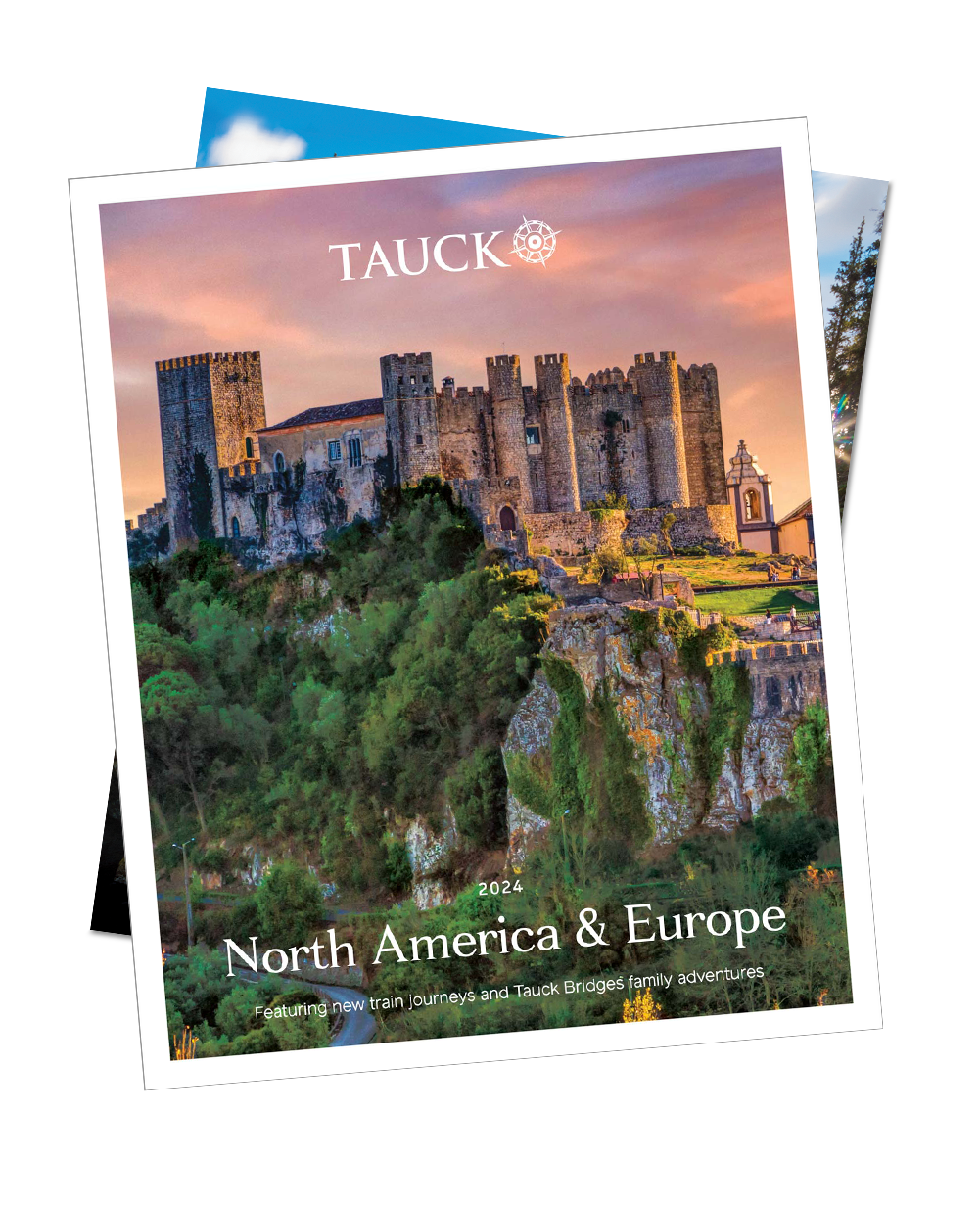
Related Journeys
Other Journeys You May Enjoy
From $8,990
Land Journey
- Destinations
- Antarctica & the Arctic
- Australia & New Zealand
- Israel & Jordan
- Latin America
- United States
- Tours & Cruises
- Exclusive Partnership
- Family Journeys
- Guest Favorites
- River Cruises
- Small Groups
- Small Ship Cruises
- Awards and Accolades
- Our History
- Tauck Impact
- The Tauck Difference
- The Taucker Blog
- About Tauck
- Media Center
- Tutorial Video
- Agent Connect
- Register Your Agency
- General Information
- Travel Protection
- Newsletter Sign Up
- Order an eGift Card
- Request a Brochure
- Tauck Forums
- Travel and Health
- Travel Updates
Sign Up to Subscribe to Our Emails
TTC family of brands
My Trafalgar
Destinations
Get Inspired
866 513 1995

See All Poland Tours
Trending Poland tours
Save up to $259
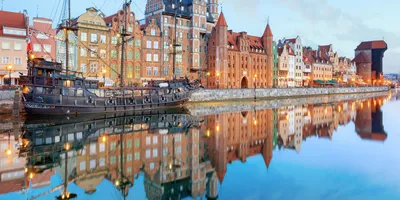
Best of Poland
7 Locations
11 Day Poland Tour to Warsaw, Gdańsk and Kraków
Save up to $600
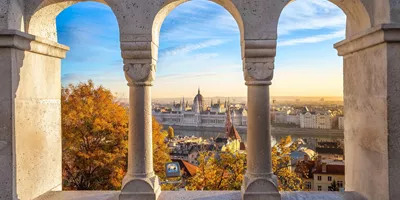
Bohemian Highlights
10 Locations
5 Countries
14 Day European Tour of Germany, Poland, Hungary, Austria and Czech Republic
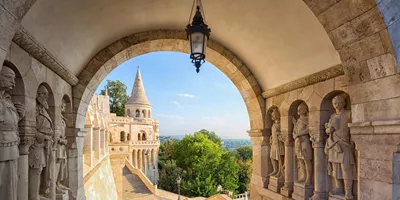
Highlights of Eastern Europe
14 Locations
8 Countries
17 Day Eastern Europe Tour of Vienna, Budapest, Kraków, Berlin and Prague
See More Poland Trips
5 million happy guests and counting
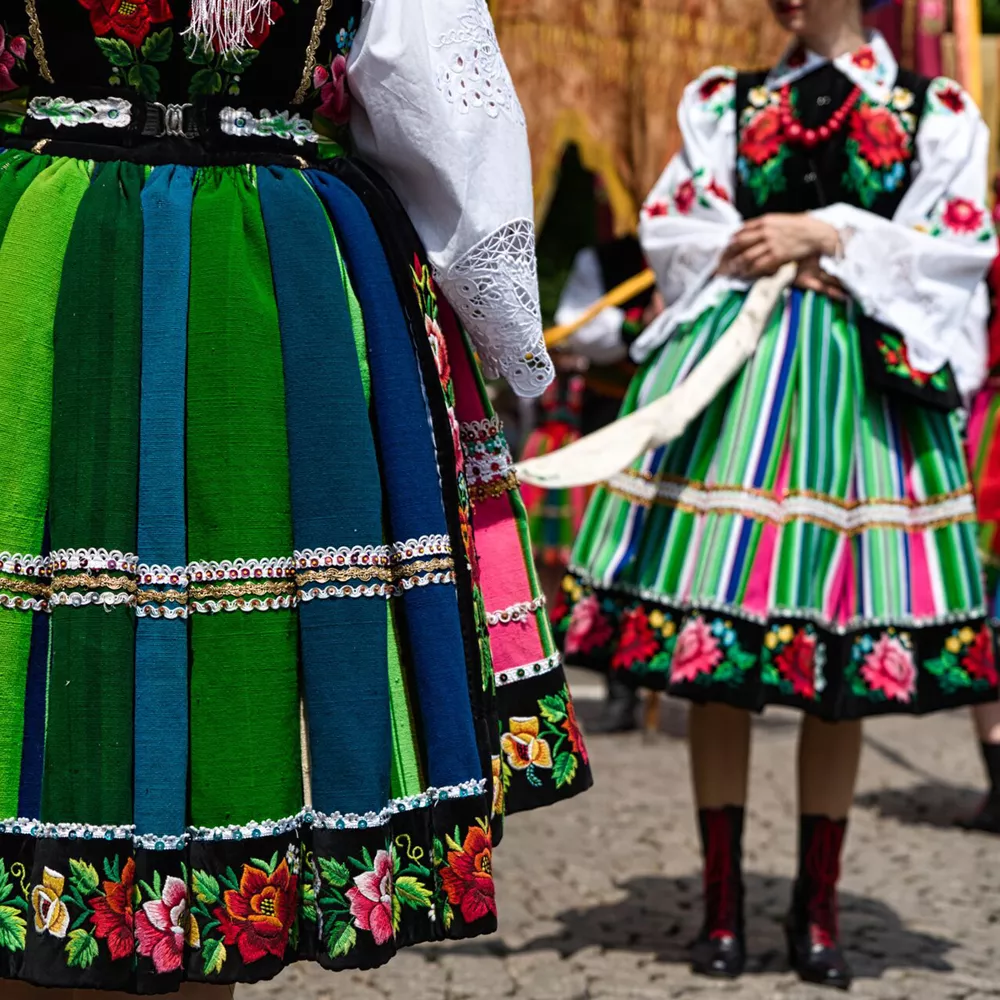
Polish złoty
Capital City
Good morning
Dzień dobry
Good evening
Dobry wieczór
"A land of unspoiled countryside and splendid buildings, and home to 14 UNESCO World Heritage Sites and 23 national parks, Poland is rich in culture, history and natural beauty"
Steven, Travel Director
Enjoy the music of Chopin in Warsaw
The city where Chopin was first discovered provides the perfect backdrop to his masterpieces. Take your pick of many museums, galleries, terraces and parks that still perform concerts daily in honor of this Polish composer and virtuoso, two centuries on.
Journey to the little-known district of Praga in Warsaw
One of the best things to do in Warsaw is to leave the well-trodden Old Town and visit the right bank district of Praga. The once derelict neighborhood has become a favorite among students and artists alike. Explore the gritty bohemia's abandoned factories, now reclaimed and transformed into communal cultural spaces, street art, markets and bars.
Journey to Gdansk
For a change of scenery, head to the port city of Gdansk that bears little resemblance to Poland’s urban centres. Stroll through Main Town and be dazzled by the colorful shop facades of Long Market, an ornate Golden Gate and the bronzed body of a sea God in Neptune Fountain.
Visit Westerplatte, the place where WWII began
A scattering of shelled bunkers and burnt-out ruins contain reminders of the Battle of Westerplatte. This memorial site and monument will whisper Poland’s forlorn story to you. See the lighthouse where the first warning shots were fired and stand where the few brave Polish soldiers tried in vain to defend against the German invasion.
Explore Wieliczka Salt Mines
A short drive from Krakow is a subterranean labyrinth to behold. Descend the many steps and discover an underground world so remarkable in size it contains lakes and a chapel made of salt - right down to its chandeliers. One of the Poland attractions you will have to see with your own two eyes to believe.
Our top 5 things to do in Poland
Walk through the artistic underbelly of Warsaw and stand in the spot where WWII began. These are just some of the captivating experiences served up by Trafalgar in Poland.
Auschwitz-Birkenau Museum
The largest of the Nazi concentration camps and the resting place of over one million men, women and children, Auschwitz-Birkenau Museum is a somber place of reflection. Come face-to-face with the realities of the Holocaust with a walk through these infamous grounds, where you will uncover a dark time in humanity that’s not to be forgotten.
Galeria Raster
Founded by two art critics, this independent gallery is a place known for encouraging participation in culture. Immerse in the excitement of Poland’s next generation with film screenings, concerts, countless artworks and a self-publishing bookstore all found at Galeria Raster. This is the heart of the local contemporary art scene.
Krolikarnia
Fresh respite is found in the ‘Green District’ of Mokotów and the classicist palace that calls it home. Come to Krolikarnia to see the country’s largest collection of sculptures and relax in the leafy estate grounds, where idyllic reading spots and garden performances are plentiful.
Best museums in Poland
A Trafalgar tour through Poland will take you back in time to World War II and forward in time to Poland’s next generation of artists. It is through these museums that you will understand the many chapters of Poland's remarkable story.
The humble pierogi dumplings have been comforting the Polish since the 13th century, enduring and evolving as the years went by. Savoury, salty, spicy, sweet - these half-moon delights will not fail you. From the traditional to the more creative, chefs around the country will surprise you with many moreish fillings.
With a name meaning ‘hunter’s stew’, it’s unsurprising the meal of bigos is meaty and hearty. Expect cabbage, sauerkraut, finely chopped meats and the odd splash of beer or wine stewed for hours. Let this traditional single pot meal warm you on a cool Polish night.
Placki Ziemniaczane
Popular in World War II when there was little to eat, today these potato pancakes are considered a special treat. Try one - or many - at an outdoor market or festival topped with a generous dollop of sour cream or a sweet condiment.
Best food in Poland
Our tours of Poland is complete with many tastes of its simple - and simply delicious - national dishes. You will quickly understand why the Polish say ‘smacznego’ (meaning ‘enjoy your meal’) at breakfast, lunch and dinner.
What to pack for Poland

Polish phrasebook
Polish is the official language of Poland, so pack a phrasebook to help you learn a few words. If you can’t spare the space, download them to your Google Translate app offline.
A secure day bag
Though Poland is considered a safe destination, it isn't immune to pickpockets and petty crime. A good quality zipper bag or travel wallet will keep cash, cards and important items safe.
Poland is a massive country and on some days, long journeys are unavoidable. The scenery will provide plenty of visual entertainment, while headphones can be used to listen to some local music or enjoy podcasts about Polish history and culture.
A filtered water bottle
Polish water is officially safe to drink, but the plumbing can affect the quality. Many locals and tourists use bottled water; take the cheaper and more eco-friendly option of a reusable bottle with built in filtration.
Some WWII reading
Whether you’re a history buff or not, a refresher on the world wars will make for a richer experience of the significant and soul stirring sites you will visit in Poland.
Our Europe & Britain destinations
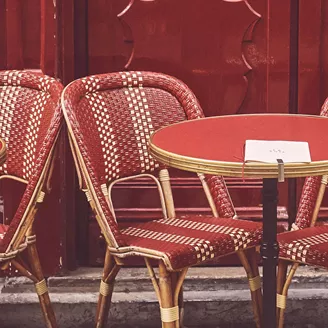
Bosnia Herzegovina
Czech Republic
Liechtenstein
North Macedonia
Netherlands
Northern Ireland
Switzerland
Italy Test 02
Other worldwide regions we visit
Africa the Middle East
Australia and New Zealand
North and Central America
South America
Get your free brochure
Find your next escape with the world's leading travel brand
Request A Brochure
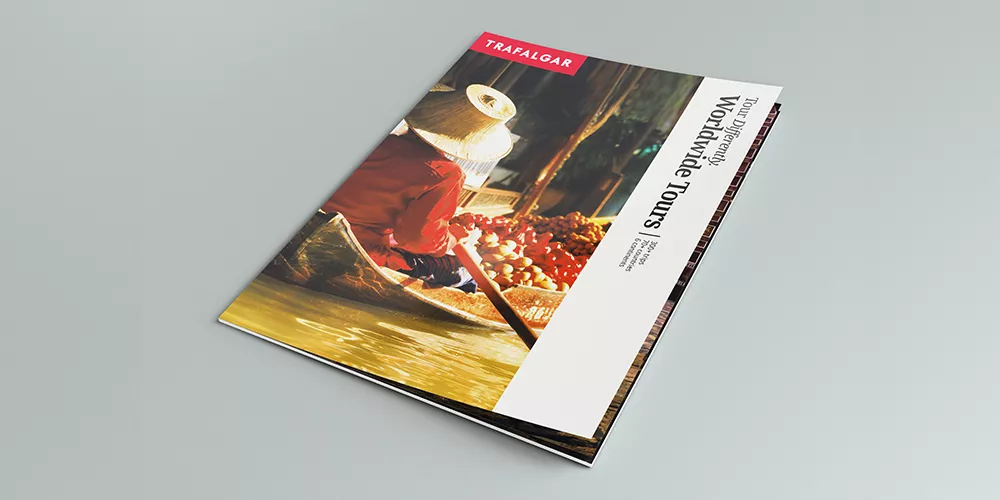
Award winning tours
Every year, we're proud to win some of the most prestigious travel accolades around the world - from the Travel Globes to the Agent's Choice Awards
Search Our Tours
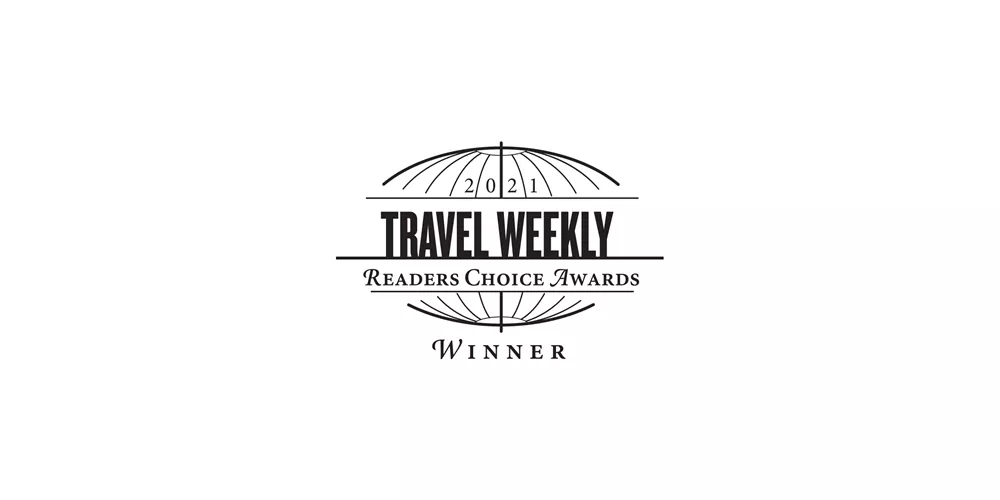
Help & Info
WE MAKE TRAVEL MATTER®
Unedited Reviews
Our Destination Management Companies
Frequently Asked Questions
Travel Updates
Media & Press Room
Do Not Sell or Share My Personal Information
Travel Planning
Get Your Free Brochure
Travel Insurance
Booking Conditions
Trip Deposit Level
Recommendations
Trafalgar is a proud member of The Travel Corporation family of companies.
#SimplyTrafalgar
Selected Region
United States
United Kingdom
New Zealand
South Africa
Copyright 2024 Trafalgar. All rights reserved.
Terms and Conditions
Privacy Policy
Cookie Policy

IMAGES
VIDEO
COMMENTS
Tour Introduction. In this 8-day tour to Poland, we visit the sites of the former ghettos in Warsaw, Lublin and Krakow alongside four of the concentration and death camps - Treblinka, Majdanek, Belzec and Auschwitz-Birkenau - that played such a significant role in this genocide. We look at the struggle of both the Jews and the Poles against ...
It allows an online guided tour of the former German Nazi concentration and extermination camp Auschwitz-Birkenau. ... Study tour groups may visit Block 2 and 3 of the former Auschwitz I camp and wooden hospital barracks (B-80 and B-210) at the Auschwitz II-Birkenau camp. Block 2 and 3 are ones of so-called "reserve blocks" of the Museum ...
A tour lasts approximately 3.5 hours and it starts at Auschwitz I. The price includes a tour of the former Auschwitz I and Auschwitz II-Birkenau camps with a guide-educator, rental of a headset. The Museum provides transfer between both sites of the former camp. The shuttle bus is intended for individual visitors in guided tours.
The Concentration Camps. A crumbling watchtower at Auschwitz, once manned by Nazi guards. The two camps we visited, Auschwitz I and Auschwitz II-Birkenau, were built during World War II by the Nazis in Oświęcim, a Polish town west of Krakow. They served as the center of the mass extermination of Jews, Poles, Roma Gypsies, and other ethnic groups.
On 27 January 2024, twenty Auschwitz and Holocaust Survivors took part in the commemoration of the 79th anniversary of the liberation of the German Nazi concentration and extermination camp. The event was held under the honorary patronage of the President of the Republic of Poland, Andrzej Duda. Evil does not beget good, but good cannot be ...
Full description. This tour features a visit to Auschwitz, the largest Nazi concentration camp from World War II. See the gas chambers, crematorium and death cells. After pickup at 6:00 AM, you'll be transferred to Warsaw Central Railway Station. Go by train to Krakow Main Railway Station, a journey of approximately 2.5 hours.
This full day tour takes you from Wrocław to the Auschwitz and Birkenau concentration camps, which were used by the Nazis as forced labor and extermination camps during World War II. Over a million men, women and children lost their lives here or were forced to work in extreme conditions. These concentration camps have since become enduring ...
The Museum is not responsible for bookings made on any other sites. In order to enter the Auschwitz Memorial all visitors, also those coming in organized groups, must have their personalized entry pass and ID with them. All guided tours start at former camp Auschwitz I. Visits to the Museum by children under the age of 14 are not recommended.
Even if Auschwitz is known mainly as the extermination camp, it was established as a concentration camp in mid-1940. It was one of over 40 camps in Poland that were supposed to be a solution to the problem of overflowing prisons full of arrested locals. The first people were brought to Auschwitz on June 14th, 1940, from the prison in Tarnow.
Auschwitz I. Guided tour (2.5 hours) Break time (10 minutes) Auschwitz II-Birkenau. Guided tour (1 hour) Transfer. (1.5 hours) 10 drop-off locations: Straszewskiego 14, 33-332 Kraków, Poland, Kraków, Hotel Maltański, Hotel Maltański, Parking, Hotel Maltański, Hotel Maltański, Floriana Straszewskiego 14, Hotel Maltański, Hotel Maltański.
Auschwitz-Birkenau Guided Tour. Pay your respects to the victims of Nazi persecution as you visit World War Two's largest concentration camps on the Auschwitz-Birkenau Guided Tour. After arriving at the museum, you'll step through the original entrance gate before finding out more about the terrible events that unfolded from 1940 to 1945.
1. Stutthof Concentration Camp. Stop: 2 hours - Admission included. A guided tour of the first concentration camp in Poland. You will hear stories pertaining to many of the camps significant rooms, before then heading to the Stutthof Museum later in the day. Read more.
Plan your visit. Plan your visit. Fence and barbed... In order to take in the grounds and exhibitions in a suitable way, visitors should set aside a minimum of about 90 minutes for the Auschwitz site and the same amount of time for Auschwitz II-Birkenau. It is essential to visit both parts of the camp, Auschwitz I and Auschwitz II-Birkenau, in ...
The tours to Auschwitz, the largest of the German concentration camps and the centuries old Wieliczka Salt Mine were excellent well planned tours with informed tour guides, who were happy to answer additional questions. ... The Poland tour was excellent! The group leader Beata was awesome and all guidance, planning and itinerary was wonderful ...
per adult (price varies by group size) Stutthof Concentration Camp Private Tour from Gdansk. 13. Historical Tours. from. $176.46. per adult (price varies by group size) DAILY Stutthof Concentration Camp with Guide and Transport. 7.
Auschwitz concentration camp ... The camp at Auschwitz was established in April 1940, at first as a quarantine camp for Polish political prisoners. On 22 June 1941, ... and a tour of the building site of Auschwitz III, the new IG Farben plant being constructed at Monowitz.
12 Day Private Tour of Poland with Hotels. 7. Historical Tours. from . $4,690.00. per adult. Warsaw at War 1939-1945: A Self-guided Audio Tour. 4. Audio Guides. from . $5.99. per adult. Itinerary. ... Majdanek Concentration Camp & Lublin Full Day Private Tour from Warsaw was a very special tour. Our guide Marcin, who accompanied us on the tour ...
Benefit from pick-up at your accommodation in Krakow, and journey by air-conditioned vehicle to Oświęcim. Enter the Auschwitz-Birkenau Memorial and Museum for a 3.5-hour guided tour of the former Nazi concentration camps. Hear how 1.3 million Jews, along with prisoners from Poland, France and Italy were murdered there during World War II.
We offer visitors several options for guided tours. Each includes tours of Auschwitz I and Auschwitz II-Birkenau. • General tours (3,5 h) • Guided tours for individual visitors (3,5 h) • One or two-day study tours (6 h or 3+3 h) • General tours - shorter version before closing hours (2,5 h) • Online tour (2 h) Because of a large ...
Auschwitz, also known as Auschwitz-Birkenau, opened in 1940 and was the largest of the Nazi concentration and death camps. Located in southern Poland, Auschwitz initially served as a detention ...
Experience Tauck's Jewish heritage tours. 800-788-7885 or your travel advisor START PLANNING THE TRIP OF A ... Visit to Plaszów concentration camp in Kraków . Visit to Poland's poignant museum and memorial at Auschwitz-Birkenau ... Also during your time in Prague, you'll be joined by a Czech concentration camp survivor for a poignant ...
6. From Warsaw: Treblinka and Polish Countryside Private Tour. During WWII, Nazis built Treblinka, a Polish extermination camps that saw the death of 254,000 Jews from Warsaw and 112,000 from other parts of the region between the 23rd of July and the 21st of August 1942. The total number of people murdered in Treblinka is estimated at 870,000.
Book your Poland tour package with Trafalgar and discover how the younger generation are reshaping this country's future and enjoy delicious Polish food. ... The largest of the Nazi concentration camps and the resting place of over one million men, women and children, Auschwitz-Birkenau Museum is a somber place of reflection. ...